 |
by Mat Smith on (#6K4M5)
Apple's latest update to iOS has an important addition - at least in the European Union. With the arrival of iOS 17.4, Apple now officially supports third-party app stores on the iPhone. Web browser makers no longer need to base their apps on Apple's WebKit, and Apple is opening up the NFC chip to wireless payment methods that are not Apple Pay. These changes all adhere to strict new rules in the EU. (Expect to hear more changes from Apple, Google and other major tech players as the EU's Digital Markets Act comes into power.)If you're not in the EU (same), Apple Podcasts now offers automatic transcriptions in English, Spanish, French and German. You can search text and tap it to play the audio at the granular word level. It wouldn't be an iOS update with even more emoji (finally, phoenix emojis), lots of bug fixes and more.- Mat SmithThe biggest stories you might have missedMicrosoft is ending support for Android apps on WindowsThe best thing about the M3 MacBook Air is... the M2 MacBook AirMini's first electric Countryman has a wild interiorYou can get these reports delivered daily direct to your inbox. Subscribe right here!Nothing Phone 2a reviewA budget phone packed with personality.EngadgetCheap midrange smartphones don't have to be boring, contrary to popular belief and the phones on sale at your nearest electronics store. Taking a leaf out of the Pixel's strategy book, Nothing's latest phone, the 2a, is cheaper, slightly lower specced and still delivers on most of the essentials, with a particularly eye-catching screen on the $349.There's a caveat, of course. Folks in the US will need to sign up for the company's Developer program to buy the Phone 2a, and while the handset supports 5G on T-Mobile, you won't get any 5G on AT&T or Verizon. Check out the full review.Continue reading.Facebook, Instagram and Threads all dropped for a couple of hoursMeta even logged out some users.Meta says it has resolved an issue that prevented people from accessing Facebook, Instagram and Threads. The problem started at around 10AM ET, with outage reports for the services (and WhatsApp) spiking. Earlier today, a technical issue caused people to have difficulty accessing some of our services," Facebook spokesperson Andy Stone wrote on X. We resolved the issue as quickly as possible for everyone who was impacted, and we apologize for any inconvenience."Continue reading.Colorware takes you back to grade school with the Apple Number 2 PencilDo not sharpen.'ColorwareColorware has painted many items over the years, going back to the iPhone 3G and beyond, but its latest product is particularly clever. The limited edition Apple Number 2 Pencil transforms Apple's second-gen stylus into a facsimile of a standard HB #2 pencil. Under the clever skin, you still have a high-latency Apple Pencil. The Apple Number 2 Pencil costs $215, while the boring, buttoned-down white second-generation Apple Pencil is $79.Continue reading.TikTok to creators: make longer videos, get paidCreator Rewards is now out of beta and will pay for videos longer than a minute.Last year, TikTok rolled out a new monetization system called the Creativity Program for streamers, to encourage longer videos that sell more ads. Now, the company is rolling the scheme out widely with a new name, the Creator Rewards Program, which only pays for videos longer than one minute. Time for us to get our TikTok on.Continue reading.This article originally appeared on Engadget at https://www.engadget.com/the-morning-after-ios-174-is-here-121539723.html?src=rss
|
 Engadget is a web magazine with obsessive daily coverage of everything new in gadgets and consumer electronics
Engadget is a web magazine with obsessive daily coverage of everything new in gadgets and consumer electronics
| Link | https://www.engadget.com/ |
| Feed | https://www.engadget.com/rss.xml |
| Copyright | copyright Yahoo 2025 |
| Updated | 2025-12-18 20:47 |
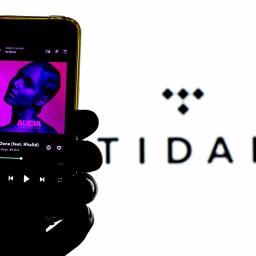 |
by Sarah Fielding on (#6K4HR)
Tidal is condensing its plans in a bid to compete with fellow music streamers. The platform is removing its HiFi Plus and HiFI tiers to create one individual plan, aptly called Tidal. The new option will offer everything Plus users paid $20 monthly for but for $11- the same price as Spotify and Apple Music's one-person plans. It seems Tidal could no longer justify asking people to pay an extra $9 when its competitors offered similar perks for less (the company notably laid off 10 percent of its employees in December).The new solo tier will include Dolby Atmos, HiRes FLAC and lossless audio for over 100 million songs. Apple Music also offers lossless audio, but this puts Tidal ahead of Spotify, which has yet to roll it out. There is a small catch for current HiFi Plus subscribers: Tidal's DJ integration feature is becoming a DJ Extension - which will cost subscribers another $10. Anyone who has used DJ integration in the last 90 days will automatically have the extension added to their new plan when the tier overhaul takes effect on April 10. Notably, Tidal's family plan will also condense into just one option, a $17 offer rather than the HiFi Plus' $30 a month price tag.While the changes are overall a good deal for Tidal subscribers, the music streamer is getting rid of multiple options - including its free tier. As of March 4, Tidal also removed its discount for newly subscribing military personnel and first responders. Existing free tier subscribers will have to pay full price starting April 10, while military personnel and first responders who already use Tidal will have to make the switch starting June 10. Students who use Tidal will keep their $5 monthly rate.This article originally appeared on Engadget at https://www.engadget.com/tidal-cuts-9-from-the-price-of-its-hi-fi-audio-streaming-plan-101301143.html?src=rss
|
 |
by Sam Rutherford on (#6K4G5)
Logitech has been in the webcam game since way before the pandemic made having one a necessity. But for some reason, none of them were good enough to be part of its flagship productivity lineup alongside peripherals like the MX Master 3S and MX Mechanical. That changes now with the introduction of the $200 MX Brio which sports a new sensor for significantly improved image quality, upgraded mics and a special hinge that could be really handy for presentations.Even before you get to photo and video quality, the MX Brio impressed me with a much more premium design compared to the old non-MX Brio from 2017. It's available in three colors (silver, gray and black) and has an aluminum housing instead of plastic like on the previous model. But what I really like are details like the built-in shutter that can be opened and closed by twisting the ring on the front of the camera. This means you don't have to worry about losing a lens cap like you do with some of its rivals like the Razer Kiyo Pro.Photo by Sam Rutherford/EngadgetThe MX Brio also comes with a clip for mounting it on your laptop or monitor. However, if you prefer a more sophisticated setup using a tripod, the clip detaches magnetically to reveal a hidden 1/4-inch thread. That said, the coolest thing about the clip is its extra hinge that allows you to tilt the camera down into what the company calls Show Mode, which automatically rotates its field of view (FOV) to provide a bird's eye view of your desk.This one simple feature makes it super easy to share notes or show off a product without needing to reconfigure your entire setup or add a second camera to the mix. It's something I've wanted to do countless times on the Engadget Podcast (back when we were still livestreaming it), but couldn't since my workspace doesn't have room for a dedicated top-down camera arm.Photo by Sam RutherfordAs for image quality, the MX Brio is based on a Sony Starvis sensor that supports recording at up to 4K/30fps while also offering much better dynamic range and low-light sensitivity than before. To test this, I compared the MX Brio to its predecessor and the difference was immediately apparent. Even when using the basic Windows Camera app, the new model's pics were much more colorful and accurate. Furthermore, the position of my desk means I often have to contend with bright backlighting that makes my face look unusually dark, but the MX Brio overcame that in a way the old model never could. And thanks to certification for several major apps including Zoom, Microsoft Teams and Google Meet, you'll look even better when using proper video conferencing software.Another thing I appreciate is that Logitech gives you a ton of options to adjust things like white balance, FOV, exposure and more. The addition of dual beamforming mics also helps audio come through clearly while AI cuts down on distracting ambient noise. But one of the best nods to general usability is that now you can use both the Options+ or Logitech's G Hub app to control the webcam. This is nice for anyone who needs to hop on calls for work but also wants to livestream at night without needing to switch between multiple devices or programs. The only thing that's really missing is the ability to quickly set a custom white point using gray cards like you can on a traditional digital camera.Granted, I've only had a short time to play around with the MX Brio. But even so, it's clear Logitech finally has a webcam that can hang with the company's portfolio of best-in-class productivity devices.The MX Brio goes on sale today, though the black model will only be available from Best Buy for the first 90 days.This article originally appeared on Engadget at https://www.engadget.com/the-logitech-mx-brio-packs-a-big-upgrade-in-image-quality-and-a-handy-party-trick-080134629.html?src=rss
|
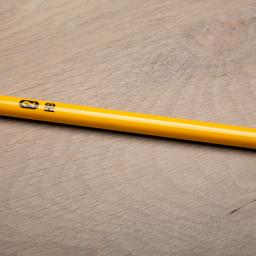 |
by Steve Dent on (#6K4ES)
Colorware has painted a lot of items over the years going back to the iPhone 3G and beyond, but its latest product is particularly clever. The limited edition Apple Number 2 Pencil transforms Apple's 2nd-gen stylus into a facsimile of a standard HB #2 pencil, with the only thing missing being chew marks on the eraser."What sets it apart? It connects with your iPad in a snap, charges without a hitch, and delivers precision that feels just right," the company states on the product page. "And it's styled after the familiar pencil we all know, upgraded for today's tech. It's not just smart; it's a smart looker too." (As a reminder, the 2nd-generation Apple Pencil offers features like "pixel-perfect precision, tilt and pressure sensitivity, and imperceptible lag," according to Apple.)ColorwareColorware goes on to describe other ways that it will change your life. "It's that unspoken impact, the quiet ripple of intrigue it sends through the room. This isn't just about having a piece of technology; it's about carrying a symbol of uniqueness that speaks volumes before you do."That paint sure is doing a lot of work! But it ain't cheap - the Apple Number 2 Pencil costs $215, which is a $136 premium over the 2nd-generation Apple Pencil, currently priced at $79. Still, it's undeniably adorable and could be a great gift for an iPad artist. Just don't try to sharpen it (or chew on it).This article originally appeared on Engadget at https://www.engadget.com/colorware-takes-you-back-to-grade-school-with-the-apple-number-2-pencil-073709840.html?src=rss
|
 |
by Mariella Moon on (#6K4ET)
Elon Musk, who sued OpenAI for violating its non-profit mission and chasing profits, allegedly wanted the organization to merge with Tesla when it was starting to plan its transition into a for-profit entity in order to accomplish its goals. Well, either that or get full control of the company, OpenAI said in a blog post. The organization responded to Musk's lawsuit by publishing old emails from 2015 to 2018 when he was still involved in its operations.When OpenAI introduced itself to the world back in 2015, it announced that it had $1 billion in funding. Apparently, Musk was the one who suggested that figure, even though OpenAI had raised less than $45 million from him and around $90 million from other donors. "We need to go with a much bigger number than $100M to avoid sounding hopeless... I think we should say that we are starting with a $1B funding commitment... I will cover whatever anyone else doesn't provide," he wrote, according to the company.In 2017, OpenAI's leaders realized that they truly did need a lot more money - billions of dollars - because artificial intelligence required vast quantities of computing power. That's when they started discussing its transition into a for-profit structure. OpenAI said Musk was involved in the planning and originally wanted majority equity, control of the initial board of directors and the CEO position. However, the organization felt that it was against its mission to give one person absolute control over it. They couldn't get to an agreement, and Musk reportedly withheld funding while talks were ongoing.Musk then forwarded an email to OpenAI in 2018, which suggested attaching the organization to Tesla so that the automaker could provide its funding. He explained in his letter that he believed it was "the only path that could even hope to hold a candle to Google." OpenAI didn't say how their discussions progressed after that, but Musk's idea obviously didn't push through, and he soon left the company. In the last email from Musk that the organization posted, he said his "probability assessment of OpenAI being relevant to DeepMind/Google without a dramatic change in execution and resources is 0%."In his lawsuit, Musk accused OpenAI of being a "closed-source de facto subsidiary" of Microsoft, which uses its AI technology for products like Bing after investing $13 billion into the company. "Microsoft stands to make a fortune selling GPT-4 to the public, which would not be possible if OpenAI - as it is required to do - makes the technology freely available to the public," the lawsuit argued. OpenAI said Musk was aware its mission did not imply open sourcing its artificial intelligence technology, though. It released an email in which Ilya Sutskever, its co-founder and chief scientist, told Musk: "As we get closer to building AI, it will make sense to start being less open. The Open in OpenAI means that everyone should benefit from the fruits of AI after its built, but it's totally OK to not share the science." Musk then responded with "Yup.""We're sad that it's come to this with someone whom we've deeply admired - someone who inspired us to aim higher, then told us we would fail, started a competitor, and then sued us when we started making meaningful progress towards OpenAI's mission without him," the company wrote in its post. After Musk filed his lawsuit, the company sent internal memos to its staff denying his allegations. Chief Strategy Officer Jason Kwon said in one memo that Musk's claims "may stem from [his] regrets about not being involved with the company today." Sam Altman said in another memo that he misses the person he knew who competed with others by building better technology. He also responded to a five-year old tweet from Musk thanking him for defending Tesla.
|
 |
by Steve Dent on (#6K4D3)
Last year TikTok rolled out a new monetization system for streamers called the Creativity Program to encourage longer videos that allow it to sell more ads. Now, the company is rolling the scheme out widely with a new name, the Creator Rewards Program, that only pays for videos longer than one minute."The Creator Rewards Program will continue rewarding high-quality, original content over a minute long with an optimized rewards formula focused on 4 key areas: originality, play duration, search value and audience engagement," the company wrote.TikTok noted that longer content is more lucrative with with total creator revenue increasing by over 250 percent within the last 6 months, and the number of creators making $50,000 each month nearly doubling" since the beta began.TikTokTikTok is also expanding its subscription features for creators. Previously, only live streamers could access offerings like exclusive (paid) content, badges and personalized emoji, but now the company is expanding these benefits beyond live streams."In the coming weeks, eligible creators can sign up to access a new way to strengthen their community with added value through exclusive content and benefits, while providing their most engaged communities an opportunity to connect even deeper with their favorite creators," TikTok wrote.The company's Creator Fund, which had no minimum requirement for video length and ended last year, was often criticized for low payouts. Last year, streamer Hank Green shared that he made about 2.5 cents per 1,000 views on the platform - a fraction of his YouTube earnings and about half of what he earned on TikTok prior to the fund.By comparison, select streamers embraced the beta Creativity Program. Some (with subscriber numbers varying from a half million to several million) received payouts ranging in the low thousands to nearly $100,000 per month, "a complete 180" from what they saw in the Creator Fund, according to one creator.That said, audiences have been uncertain about longer videos. In a TikTok internal survey from last year, nearly 50 percent of users said videos over a minute in length were "stressful," and a third of users watched videos online at double speed, according to a Wired report from earlier this year.How to pay creators is not TikTok's only challenge at the moment. Yesterday, a group of US lawmakers introduced a new bill that would force parent ByteDance to sell TikTok in order for the app to remain in the United States.This article originally appeared on Engadget at https://www.engadget.com/tiktok-to-creators-make-longer-videos-get-paid-055013923.html?src=rss
|
 |
by Tim Stevens on (#6K4D4)
Mini has promised to go all electric by 2030, a date that seemed pretty far off back in 2021 but right now is starting to sound not that far off at all. While the company's prior battery-powered efforts have been great, it's going to take something more serious and more practical to convert the masses to the wonders of electrification.That something might just be the 2025 Mini Countryman. While Mini will offer this car with a gasoline-burning engine if you're feeling traditional, the star of the lineup will be the new, $45,200, all-electric Countryman SE. With 313 horsepower and 363 pound-feet of torque, it's quick, and with way more cargo space, it's practical too.But how does it drive? That's what we headed to Portugal to find out, and while the extra volume and weight of the new Countryman does come with some compromises, it's an engaging SUV to drive with a fantastic interior that's just a few software updates away from perfection. Full the full preview, watch the video up top.This article originally appeared on Engadget at https://www.engadget.com/minis-first-electric-countryman-has-a-wild-interior-thats-not-to-be-missed-041508080.html?src=rss
|
 |
by Karissa Bell on (#6K46F)
A group of lawmakers have introduced a new bill that would force ByteDance to sell TikTok in order for the app to remain available in the United States. The Protecting Americans from Foreign Adversary Controlled Applications Act" would prohibit US app stores and web hosting services from distributing TikTok unless it divested from parent company ByteDance.The bill is the latest in a long line of attempts by lawmakers and other officials to ban or force a sale of the app. Former President Donald Trump attempted to force a sale of TikTok in 2020, but was ultimately unsuccessful. The Biden Administration has also pressured the company to divest. And a US District Court Judge recently blocked an attempt to ban the app in Montana.The new bill, which comes from a bipartisan group of lawmakers in the House, takes a different approach. It would give ByteDance a six-month window to sell TikTok before app store-level bans would come into effect. It would also require TikTok and other apps to provide users with a copy of their data in a format that can be imported" into competing apps. And though TikTok is referenced several times in the text of the bill, the legislation would open the door for bans on other foreign adversary-controlled" apps if the president deemed them to be a national security threat.This bill is an outright ban of TikTok, no matter how much the authors try to disguise it," TikTok said in a statement. This legislation will trample the First Amendment rights of 170 million Americans and deprive 5 million small businesses of a platform they rely on to grow and create jobs."TikTok CEO Shou Chew has maintained that a divestment would not fully address officials' concerns about US user data. The company has spent years trying to address national security concerns about its service with an initiative called Project Texas. Under the plan, created as a result of years of negotiations with the Committee on Foreign Investment in the United States (CFIUS), US users' data would be separated into US-based servers and government officials would be able to oversee audits of TikTok's source code and other aspects of its operations.The Washington Post reported last year that TikTok's negotiations with CFIUS had been recently revived amid doubts the [Biden] administration has the authority to ban TikTok on its own." If Congress was able to pass the new bill, it would clear up such questions and create a new process for forcing ByteDance's hand.The American Civil Liberties Union (ACLU) and other digital rights groups have criticized the government's efforts to ban TikTok. In a statement on the latest bill, the ACLU said the proposed measure was "unconstitutional" and would hurt free speech. "Just because the bill sponsors claim that banning TikTok isn't about suppressing speech, there's no denying that it would do just that," senior policy counsel Jenna Leventoff said.Columbia University's nonprofit Knight First Amendment Institute raised similar concerns. "Congress can protect data privacy and security without banning Americans from accessing one of the world's most popular communications platforms," the organization's executive director Jameel Jaffer said in a statement. "It should start by passing a comprehensive privacy law restricting the kinds of information that TikTok and other platforms can collect."Update March 5, 2024 6:50 PM ET: This story has been updated to add comments from the ACLU and Knight First Amendment Institute.This article originally appeared on Engadget at https://www.engadget.com/lawmakers-have-a-new-plan-to-force-bytedance-to-sell-tiktok-220408004.html?src=rss
|
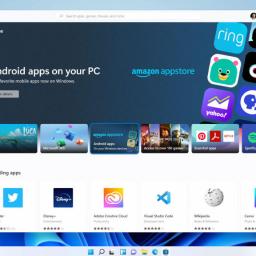 |
by Will Shanklin on (#6K46G)
Microsoft is pulling the plug on Android apps for Windows. The company said it's ending support for Windows Subsystem for Android (WSA), the underlying component behind the Amazon Appstore (and other Android apps) in Windows 11. Microsoft told Engadget it was responding to evolving customer needs."Microsoft first said in 2021 that Windows 11 would be able to run Android apps. When it arrived the following year, users could install the Amazon Appstore, and some individual Android apps were found in the Microsoft Store. The rollout was viewed as an answer to the dual threats of Android apps on Chromebooks and iOS apps on Apple Silicon Macs.A Microsoft spokesperson clarified to Engadget why it's now terminating the feature. As part of our commitment to meeting evolving customer needs, we periodically update our product offerings," they said. This involves introducing new technical innovations and retiring products. Microsoft remains dedicated to an open platform and ecosystem, and we look forward to continuing to bring the best experiences and apps to Windows."With Microsoft blazing full-tilt into all things AI, it may now see its past attempts at making Windows a dramatically better touch-focused platform as no longer worth the resources. Another possibility, as The Verge speculates, is that people hunting for Android apps on Windows expected the full Google Play Store experience - not Amazon's variant, which has an inferior overall selection.Microsoft says customers who installed the Amazon Appstore (or other apps and games using WSA) on their Windows 11 machines before Tuesday can keep using them until March 5, 2025. Meanwhile, Amazon clarified that its Appstore and associate apps will no longer be discoverable in the Microsoft Store beginning on Wednesday. In addition, developers can no longer submit new apps for the Amazon Appstore on Windows, but those with existing ones can continue to submit updates for them until this time next year.As for what's next for Microsoft, the company is rumored to launch new Surface devices on March 21. The Surface Pro 10 and Surface Laptop 6 are expected, with the company possibly marketing them as its first AI PCs.This article originally appeared on Engadget at https://www.engadget.com/microsoft-is-ending-support-for-android-apps-on-windows-213534468.html?src=rss
|
 |
by Kris Holt on (#6K42Q)
Microsoft will reveal the Surface Pro 10 and Surface Laptop 6 on March 21, according to a report. This isn't likely to just be a matter of a hardware refresh, however. Microsoft is expected to call these systems its first AI PCs, as Windows Central notes.The devices are set to be equipped with new Intel Core Ultra or Qualcomm Snapdragon X Elite-based processors that feature the latest neural processing units (NPUs) to boost AI capabilities. They're said to approximately match the iPad Pro and MacBook Pro in terms of efficiency and performance.The Surface Pro 10 and Surface Laptop 6 are expected to be among the first machines to support upcoming AI features in Windows 11. Along with on-device Copilot support, these functions are expected to include real-time live captions and translations, upscaling for games, frame rate smoothing, upgraded Windows Studio Effects and something that (at least for the time being) is seemingly called AI Explorer.Windows Central suggests the latter will be the feature that sets AI PCs apart from regular computers. AI Explorer will apparently work across any app and let you search through documents, web pages, images and chats using natural language. It's believed that the feature will create a history of everything you do on your computer and make it searchable. The tool is said to be capable of understanding context and suggesting tasks based on what's on the screen. AI Explorer is also expected to support text-based image editing. According to the report, these AI features are likely to roll out as part of this fall's 24H2 update for Windows 11.As for what else to expect from Microsoft's next laptops, both are said to have all-day battery life. The Surface Pro 10 is slated to include an anti-reflective, HDR-capable OLED screen. Rumors suggest it will have a front-facing ultrawide webcam and an NFC reader.The Surface Laptop 6 is believed to have a more significant redesign compared with its predecessors. Along with thinner bezels and rounded corners, it's expected to have a haptic touchpad, a dedicated key for Copilot and a revamped group of ports. It's also slated to be the first Surface Laptop with an Arm variant (it's worth noting that we had major reservations about the Arm-powered Surface Pro 9). The report suggests that the Intel versions of the Surface Laptop 9 and Surface Pro 10 will ship in April, with the Snapdragon variants to follow in June.This article originally appeared on Engadget at https://www.engadget.com/microsoft-may-debut-its-first-ai-pcs-later-this-month-204522580.html?src=rss
|
 |
by Will Shanklin on (#6K42R)
Amid complaints that its search results have declined in quality, Google is tweaking its algorithms to do a better job of weeding out spammy or automated content. The company says the ranking updates, arriving in May, will keep the lowest-quality content out of search." Of particular note, Google says its engine will be better at eradicating today's automated (read: AI-generated) content that's harder to spot.Google says it's taking what it learned from a 2022 algorithmic tuneup to reduce unhelpful, unoriginal content" and applying it to the new update. The company says the changes will send more traffic to helpful and high-quality sites." When combined with the updates from two years ago, Google estimates the revision will reduce spammy, unoriginal search results by 40 percent.This update involves refining some of our core ranking systems to help us better understand if webpages are unhelpful, have a poor user experience or feel like they were created for search engines instead of people," Google product management director Elizabeth Tucker wrote. This could include sites created primarily to match very specific search queries."Google sounds like it's targeting AI-generated SEO spam with its notes about scaled content abuse. The company says it's strengthening its approach to the growing problem of sites that generate garbage automated articles (as well as zeroing in on old-fashioned human-created spam).Today, scaled content creation methods are more sophisticated, and whether content is created purely through automation isn't always as clear," Tucker said. Google says the changes will allow us to take action on more types of content with little to no value created at scale, like pages that pretend to have answers to popular searches but fail to deliver helpful content."AI-generated content farms shotgun-blasting content to game the system are an increasing problem, so Google's changes -if they're as effective as promised -will be welcome. Although sites spamming that content exclusively may be easier to spot, it will be interesting to see if scenarios where once-reputable outlets experimenting with AI-generated spam (CNET and Sports Illustrated are recent examples) will be affected.Another change to the algorithm will tackle the practice of otherwise reputable sites hosting low-quality content from third parties designed to leech off the site's good name. Google provides the example of an educational site hosting a third-party payday loan review. We'll now consider very low-value, third-party content produced primarily for ranking purposes and without close oversight of a website owner to be spam," Tucker wrote.Finally, Google's updates will allegedly do better at rooting out expired domains bought by someone else and transformed into click mills. The search engine will begin treating those websites as spam.You won't see the improvements immediately as Google is giving site owners a two-month notice to adapt accordingly. The search engine changes will take effect on May 5.This article originally appeared on Engadget at https://www.engadget.com/google-is-changing-its-search-results-to-weed-out-seo-spam-195259063.html?src=rss
|
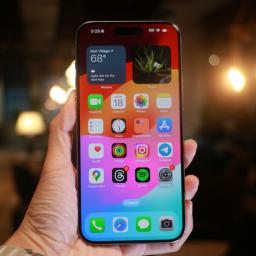 |
by Kris Holt on (#6K42S)
Apple has rolled out updates for many of its operating systems and none are more impactful than the changes to iOS - at least in the European Union. With the arrival of iOS 17.4, Apple is adhering to strict new rules in the bloc when it comes to the App Store. Apple now officially supports third-party app stores on iPhones in the EU, while developers can offer third-party payment options. Web browser makers no longer need to base their apps on Apple's WebKit, while Apple is opening up the NFC chip to wireless payments that have nothing to do with Apple Pay.While those game-changing updates are limited to the EU, iOS 17.4 does have some snazzy new features for folks elsewhere too. Apple Podcasts now offers automatic transcriptions in English, Spanish, French and German. The text will be highlighted in sync with the audio to make it easy to follow along. You'll be able to search the text and tap it to start playing the audio at a certain point.Elsewhere, there are a bunch of new emoji for you to enjoy. They include a mushroom, phoenix, lime, broken chain and shaking heads. Apple has also updated 18 people and body emoji so that you can face them in either direction.Other updates concern features like battery health, Siri (with the ability to read received messages in any supported language), stolen device protection and virtual card numbers for Apple Cash. Thanks to a caller ID update, when am Apple-verified business calls, you'll see its name, logo and department title. There are a slew of bug fixes too.Along with iOS 17.4, Apple has also released iPadOS 17.4, which has many of the same changes including the App Store updates to comply with the EU's Digital Markets Act. The company is also expected to roll out visionOS 1.1 (for Apple Vision Pro), macOS 14.4, watchOS 10.4 and HomePod 17.4 imminently.This article originally appeared on Engadget at https://www.engadget.com/ios-174-is-here-enabling-third-party-app-stores-in-the-eu-185812797.html?src=rss
|
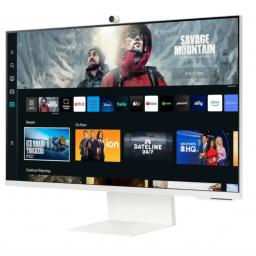 |
by Lawrence Bonk on (#6K42T)
Samsung's 32-inch M80C smart monitor is on sale for $400, down from $700. This $300 discount represents a savings of 43 percent and ties the lowest price ever recorded for the display.The M80C is both a regular 4K computer monitor and a standalone streaming box, with native support for apps like Prime Video, Netflix and Disney+, among others. It also provides access to Samsung's proprietary TV Plus service, with its selection of free live and on-demand programming.Samsung's monitor integrates with some of the biggest on-demand gaming platforms, including Xbox Cloud Gaming and NVIDIA GeForce Now. The 60Hz refresh rate won't break any speed records, but should allow for fairly smooth gameplay.Beyond entertainment, the M80C offers some built-in productivity tools. There's standalone access to Microsoft Office 365 and a tool that remotely connects to a PC or a Samsung mobile device, with no cables required. The integrated camera can even handle work meetings and the like. The line between computer monitor and entry-level PC continues to blur.All of the above features can be controlled via the included remote or by using Alexa-assisted voice commands. This deal is for the white model and is available from both Amazon and Samsung.Follow @EngadgetDeals on Twitter and subscribe to the Engadget Deals newsletter for the latest tech deals and buying advice.This article originally appeared on Engadget at https://www.engadget.com/samsungs-32-inch-smart-monitor-is-300-off-right-now-181556040.html?src=rss
|
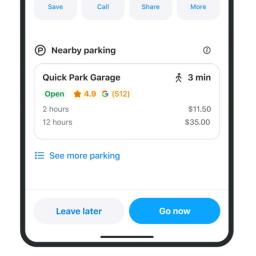 |
by Will Shanklin on (#6K42V)
Google's Waze is adding some quality-of-life navigation features in the coming weeks and months. New options can help you find parking garages (and learn how much they'll cost), alert you when the speed limit is about to decrease and guide you through roundabouts.Partnering with the Flash parking app, Waze will soon provide information about nearby parking garages. It can show you prices, whether it's covered or open-air, wheelchair accessibility options, valet services and EV charging stations. Waze says you can also reserve a parking space from the app. The feature will roll out in the coming weeks."The Flash app only averages 1.5 out of 5 stars on the App Store and 2.2 out of 5 on the Play Store. (Many customers complained about its bugginess and unreliable scanning at parking kiosks.) Hopefully, Waze's integration won't replicate the apparent rough spots from its new partner's app.The Waze app will also let you know when the speed limit is about to drop. After the feature rolls out this month, the navigation screen will show a speed limit sign at the spot in the road where it's about to slow down, giving you time to prepare. An alert at the screen's bottom will count down how many feet away the speed reduction is. (The app won't show when speed limits are about to increase, presumably to avoid encouraging people to punch it and get a head start.)WazeWaze will soon give you more information about your favorite routes to places you often travel to, like home, work or go-to coffee shops. Starting this month, when you start navigation, the app will compare your favorite routes with the fastest ones. It will use live traffic updates to contrast ETA estimates and help you decide if your favorite pathway is too backed up to be worth it.Making your way through roundabouts will be easier, too. When you approach a traffic circle, Waze will help you figure out where to enter, which lanes to use and where to exit. The feature arrives on Android this month, but iPhone owners will have to wait until later this year."Building on the app's community-sourced approach, another new feature will alert you to upcoming hazards. These include sharp curves, speed bumps and toll booths. This navigate like a local" feature will land on Android and iOS this month.Finally, Waze now notifies you when emergency vehicles are stopped ahead. When navigating, an emergency icon will sit on the virtual road ahead alongside an alert and countdown (measured in feet) as you approach it. This is the only new feature Waze says is available now (in the US, Canada, France, Mexico and France) on Android and iOS. The feature will support more countries soon.This article originally appeared on Engadget at https://www.engadget.com/waze-will-soon-help-you-find-parking-garages-and-zip-through-roundabouts-180340271.html?src=rss
|
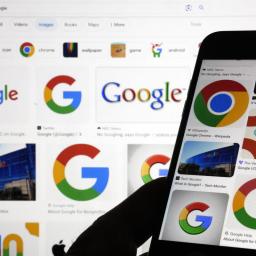 |
by Lawrence Bonk on (#6K42W)
The deadline for compliance with the European Union's Digital Markets Act (DMA) is this Thursday and Google just dropped a document outlining exactly what changes it has made (or will make) to keep up with the law. These 20+ adjustments vary in scope, and impact search users, advertisers and third-party app developers.One of the big search changes will be the inclusion of price comparison results from external aggregators when looking up things like flights or hotels. For example, searching Google for a one-way to Paris typically pulls up a module called the Google Flights unit - that's the company's own internal pricing aggregator. Competitor aggregators, like Kayak and Tripadvisor have been vocally displeased to have Google stomping around in their backyard for over a decade. In the EU at least, starting Thursday, these sorts of results will now show some results from these aggregators alongside Google's own Flights results.Android users are getting an easier way to switch out the search engine or browser, so as to not prioritize Google's products above others. These choice screens appear when you set up the device for the first time, in the settings and at various intervals during use. The company's already been doing this since 2021, but now there will be more choice screens to choose from. Google says this option is also coming to desktop Chrome users and iOS users in the near future.Digital consent for advertising is a major part of the DMA. Google users will now have to opt into sharing data across the company's various services for the purpose of personalized advertising. This is done via the settings page. Additionally, users may encounter consent banners while browsing, which will ask if they want to link data across Google services.The DMA requires app stores to offer alternative billing systems for in-app purchases. To comply, Google recently launched user-choice billing (UCB) as an option for developers to offer their own billing systems. This program is expanding to game developers this week. Of course, Android devices could always run third-party apps with their own billing systems, but now they'll be easier to implement.Google has said that as part of its DMA compliance it will begin to provide advertisers with "some additional data, which is shared in a way that protects user privacy and customers' commercially-sensitive information." We've reached out to the company for any information on what that data might be. On Thursday, the company will also be launching its Data Portability API so that users can move their data off Google's products more easily.Of course, Google couldn't help but drop a bit of shade in its compliance announcement, telling users that some of the features that we have developed to help people get things done quickly and securely online - like providing recommendations across different products - won't work in the same way anymore." Daddy corporation knows best.This article originally appeared on Engadget at https://www.engadget.com/google-just-outlined-exactly-how-its-changing-ahead-of-thursdays-dma-deadline-174518625.html?src=rss
|
 |
by Kris Holt on (#6K3WV)
Meta says it has resolved an issue that prevented people from accessing services such as Facebook, Instagram and Threads. The problem appears to have started at around 10AM ET, with outage reports for the services (and WhatsApp) spiking on Down Detector at that time.Facebook booted several members of the Engadget team back to the site's login screen and left them unable to sign back in for a couple of hours. Feeds on the other services were not loading for many users. However, fellow major Meta service WhatsApp was working for some, including me."Earlier today, a technical issue caused people to have difficulty accessing some of our services," Facebook spokesperson Andy Stone wrote on X. "We resolved the issue as quickly as possible for everyone who was impacted, and we apologize for any inconvenience."Update 3/5 11:32PM ET: Updated to note that the outage has been resolved.This article originally appeared on Engadget at https://www.engadget.com/its-not-just-you-facebook-instagram-and-threads-are-all-down-155024905.html?src=rss
|
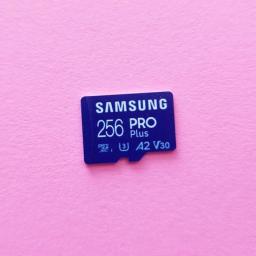 |
by Jeff Dunn on (#6K3WS)
Here's a quick PSA for anyone who has been meaning to add more storage to a gaming handheld, GoPro, security camera or cheaper Android device: A handful of Samsung microSD cards we recommend are back on sale. The discounts include the 256GB Samsung Pro Plus and 128GB Samsung Pro Ultimate for $20 and $17, respectively. Neither of those are all-time lows, but they both come within $2 of the best deals we've tracked, and they're both a few bucks cheaper than the cards' usual street prices over the last two months. The Pro Plus is the top overall pick in our microSD card buying guide, while the Pro Ultimate is a faster upgrade pick. These deals are also available at other retailers, including B&H and Samsung.com.If you're willing to trade some performance for more space, the 512GB Samsung Evo Select, the top value pick in our guide, is also down to $25 at Amazon. We saw this deal last month, but it still matches the card's lowest price to date. Typically, it's retailed around $30 over the last few months.Which one of these is the "best" deal depends on what you're looking to do. The Pro Ultimate may be worth it if you plan to regularly stress the card in a device that can take advantage of its higher speeds. It was faster than the Pro Plus across the board in our benchmark tests, so it can save you some time if you often have to, say, move files to and from a computer. That said, the Pro Plus' sequential and random speeds weren't too far off, so it'll still be quick for recording 4K video, loading video game levels and the like. If you need a higher-capacity card but still value performance, it'll probably be worth the extra $3. For reference, the 256GB version of the Pro Ultimate is now going for $35, which is a fair bit extra.If you just want a big chunk of space on the cheap, meanwhile, just go with the Evo Select. It's a clear step down from the other two cards in both read and write speeds, but it's performant enough for more casual tasks, and this deal gets you much more space per dollar. Many devices, such as the Nintendo Switch, can't fully take advantage of the faster transfer speeds of cards like the Pro Plus anyway. Like the higher-end cards, the Evo Select also comes with a 10-year limited warranty. None of the cards on sale here will be as fast as Samsung's upcoming SD Express models, but we'd expect those to be relatively expensive when they arrive later this year.Follow @EngadgetDeals on Twitter and subscribe to the Engadget Deals newsletter for the latest tech deals and buying advice.This article originally appeared on Engadget at https://www.engadget.com/samsungs-latest-microsd-card-deals-include-the-256gb-pro-plus-for-20-161535375.html?src=rss
|
 |
by Kris Holt on (#6K3WT)
This year's edition of MLB The Show is just a couple of weeks away, and Sony's San Diego Studio has shed more light on what to expect. For the first time in the series, you'll be able to create and play as women ballplayers in the Road to the Show mode.In Road to the Show: Women Pave Their Way, there will be a dedicated story in which you can build a career as a pro female baseball player. While it includes all the usual features of Road to the Show, this version of the mode will have a buddy character and depict a unique-to-women storyline following a lifelong friendship as it develops in professional baseball," according to a PlayStation Blog post.Your career path will likely be different on each playthrough. San Diego Studio added fresh commentary, MLB Network segments and other features tied to this new addition to the game.Other major sports games have added women players over the last several years, including FIFA (now EA Sports FC), the NHL series and NBA 2K. It's good to see MLB The Show joining them.In addition, MLB The Show 24 will continue to showcase stories from the Negro Leagues under a partnership with the Negro Leagues Baseball Museum. The latest edition of the series will feature 10 new Negro League Legends, each of whom has their own storyline. Among those players is Toni Stone, who was the first woman to play full time in the leagues.Meanwhile, MLB The Show will remain in the odd position of being a Sony-developed and published game that's coming to Game Pass on its release date. Subscribers will be able to play MLB The Show 24 via Xbox consoles and the cloud at no extra cost starting on March 19.This article originally appeared on Engadget at https://www.engadget.com/mlb-the-show-24-features-women-ballplayers-for-the-first-time-160007024.html?src=rss
|
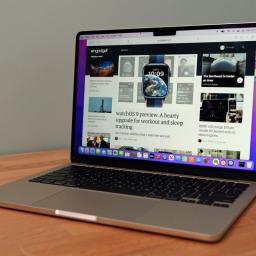 |
by Daniel Cooper on (#6K3S8)
Apple has upgraded the 13 and 15-inch MacBook Airs with the M3 and a few new bells and whistles. But while I expected the company to keep the M1 around as its budget option, it swapped it out for the base model M2. Someone at Cupertino's going to regret that, because the M2 Air is, despite its limitations, a damn fine machine. I don't know if anyone needs the added performance the M3 Air provides, but I do know you can't afford to ignore the base model M2.Historically, Apple has kept a MacBook below a thousand dollars to hook price-sensitive buyers. A grand is a lot to spend on a machine if you're broke, especially if there are cheaper low-end Windows machines (even if they are crap). Even then, the $999 MacBook is the cheap" option, and Apple will hobble it just enough to upsell you to the $1,200 model it really wants you to buy.That's why I cynically expected the M1 to remain in place, because the slower chip and decade-old chassis was a nice compromise in exchange for a cheaper machine. Yes, the M1 would allow you to join the Apple SIlicon world, but you'd have to deal with a design that's barely changed since 2017. The M2, by comparison, is less than two years old and is regarded as one of Apple's best ever machines: The fact it's available as the budget option is almost a flex.This morning, I reread my colleague Devindra Hardawar's great review of the M2 Air from 2022, and I still want one. The M2 has a wonderfully sleek design and comes equipped with plenty of great hardware. A fantastic 13.6-inch Liquid Retina display with a 500-nit backlight, a 1080p webcam, quad-speakers with support for Spatial Audio and Atmos. The better quality of stuff you got was probably Apple's rationale for holding on to the M1, and charging $1,200 for the base M2 (which itself could be upsold for more with the better add-ons).Then there's the M2 silicon itself which, in this variation, has an 8-core CPU, 8-core GPU, 8GB RAM and a 256GB SSD. Look, I know that 8GB RAM and 256GB SSD are both major drags on the M2's overall performance. But I can't stress enough that this is an ultraportable without a fan designed for lower power tasks. If you buy a machine this thin and get annoyed that it can't render a two hour 4K movie as efficiently as a Pro model, the computer isn't the problem, no matter what it's running.Of course, the sticks you could use to beat the M2 MacBook Air are the same ones for a lot of Apple Silicon machines. Limited external display support, limited port selection, no ability to add upgrades further down the road and nonexistent repair support. But some or all of those issues are probably not top of your list if you're looking for a good machine to live your life with.Ah, but what about the AI performance which Apple says is so much better on the M3 than its immediate predecessor? I'll be honest, I don't know how many people are doing AI-intensive tasks on a machine like this, or even beefier ones. After all, most people are more than happy to engage with generative AIs through a web client, which requires no local grunt at all.Not to mention that the M2 has often been offered with a hefty discount through sellers like Amazon. I'd reckon that while the $999 is a bargain, someone will probably knock another hundred off that figure the next time there's a shopping holiday. Who needs an M3 Air?This article originally appeared on Engadget at https://www.engadget.com/the-best-thing-about-the-m3-macbook-air-is-the-m2-macbook-air-144543065.html?src=rss
|
 |
by Sarah Fielding on (#6K3S9)
Oregon is set to become the latest state to pass a Right to Repair law. The Oregon House of Representatives passed the Right to Repair Act (SB 1596) on March 4, two weeks after it advanced from the Senate. It now heads to Governor Tina Kotek's desk, who has five days to sign it.California, Minnesota and New York have similar legislation, but Nathan Proctor, the Public Interest Research Group's Right to Repair Campaign senior director, calls Oregon's legislation "the best bill yet." (It's worth noting that Colorado also has its own Right to Repair legislation that has a different remit around agricultural equipment rather than around consumer electronics.)If made into law, Oregon's Right To Repair Act would be the first to ban "parts pairing," a practice that prevents individuals from swapping out a piece for another, theoretically equivalent one. For example, a person might replace their iPhone battery with an identical one from the same model, but they'll likely receive an error message that it either can't be verified or used. The system forces people to buy the part directly from the manufacturer and can only activate it with their consent - otherwise users will have to buy an entirely new device altogether. Instead, under the new bill, manufacturers would be required to:
|
 |
by Sarah Fielding on (#6K3SA)
Passkey availability has been on the rise and is only continuing to grow. The latest example comes from 1Password, the aptly named password manager, which has announced support for passkeys on Android devices. Now, anyone using a phone or tablet with Android 14 or higher can access 1Passwords's passkeys right on their device's apps. Last September, the company made passkeys available on iOS 17 and iPadOS 17 devices, along with browsers such as Chrome and Safari.So, what is a passkey anyway? Unlike a password that someone can guess or potentially obtain in a hack, passkeys consist of public and private keys. The public key belongs to whatever site an account is made with, while the private key exists solely on the device and is never seen by the involved company. Basically, it works as a puzzle of sorts, and instead of typing in a password, it uses an API to connect the private and public keys.Users will need to download the 1Password app and, when creating new accounts, choose to make one with a passkey instead of a password. To clarify, this function is currently only available for Android apps, not Chrome for Android. According to 1Password, Google is in the midst of building a new API that will allow for passkeys on mobile Chrome.This article originally appeared on Engadget at https://www.engadget.com/1password-adds-passkey-support-for-android-140058482.html?src=rss
|
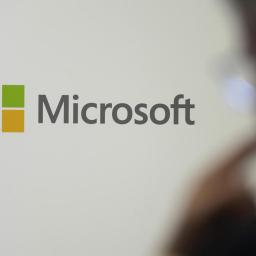 |
by Mariella Moon on (#6K3SB)
Microsoft has filed a motion seeking to dismiss key parts of a lawsuit The New York Times filed against the company and Open AI, accusing them of copyright infringement. If you'll recall, The Times sued both companies for using its published articles to train their GPT large language models (LLMs) without permission and compensation. In its filing, the company has accused The Times of pushing "doomsday futurology" by claiming that AI technologies pose a threat to independent journalism. It follows OpenAI's court filing from late February that's also seeking to dismiss some important elements on the case.Like OpenAI before it, Microsoft accused The Times of crafting "unrealistic prompts" in an effort to "coax the GPT-based tools" to spit out responses matching its content. It also compared the media organization's lawsuit to Hollywood studios' efforts to " stop a groundbreaking new technology:" The VCR. Instead of destroying Hollywood, Microsoft explained, the VCR helped the entertainment industry flourish by opening up revenue streams. LLMs are a breakthrough in artificial intelligence, it continued, and Microsoft collaborated with OpenAI to "help bring their extraordinary power to the public" because it "firmly believes in LLMs' capacity to improve the way people live and work."The company is asking the court to dismiss three claims, including one saying it's liable for end-user copyright infringement through the use of GPT-based tools and another that says it violates the Digital Millennium Copyright Act. Microsoft also wants the court to dismiss the element of the case wherein The Times accused it of misappropriating time-sensitive breaking news and consumer purchasing recommendations. As an example, The Times argued in its lawsuit that it will lose revenue if users ask ChatGPT to research articles on Wirecutter, which the news company owns, because potential buyers will no longer click on its referral links. But that's "mere speculation about what The Times apparently fears might happen," and it didn't give a single real-world example in its complaint, Microsoft said."Microsoft doesn't dispute that it worked with OpenAI to copy millions of The Times's works without its permission to build its tools," Ian Crosby, lead counsel for The Times, told the publication." Instead, it oddly compares L.L.M.s to the VCR even though VCR makers never argued that it was necessary to engage in massive copyright infringement to build their products."OpenAI and Microsoft are facing more lawsuits related to the content used to train the former's LLMs other than this particular one. Nonfiction writers and fiction authors, including Michael Chabon, George R.R. Martin, John Grisham and Jodi Picoult, accused the companies of stealing their work for AI training. More recently, The Intercept, Raw Story and AlterNet filed separate lawsuits against the company, because ChatGPT allegedly reproduces their content "verbatim or nearly verbatim" while removing proper attribution.This article originally appeared on Engadget at https://www.engadget.com/microsoft-accuses-the-new-york-times-of-doom-mongering-in-openai-lawsuit-133025748.html?src=rss
|
 |
by Lawrence Bonk on (#6K3Q1)
Skullcandy just announced new earbuds that go all-in on sustainability. The EcoBuds True Wireless earbuds are made with 65 percent certified recycled plastics and 57 percent less heavy metals than competing products. This gives the earbuds a 50 percent lower carbon footprint when compared to rival devices.The bad news? The move toward sustainability forced Skullcandy to nix the usual battery case that accompanies modern earbuds, as lithium battery packs are a major environmental offender.To make up for the lack of a charging case, the new earbuds can be charged from a smartphone, in addition to any USB-C port or outlet. The earbuds still get eight hours of use before requiring some juice.SkullcandyKeeping with the company's budget-friendly MO, these earbuds cost just $40. They are available in a Glacier colorway, which is a mix of white and blue, starting today. Skullcandy hasn't announced if it would be adding more colors to the lineup in the near future.Of course, Skullcandy isn't the first company to try its hand at environmentally sustainable audio devices. Sony once made a version of its LinkBuds S earbuds out of recycled water bottles, which were also a melange of white and blue. That seems to be the preferred colorway for major corporations looking to drum up a bit of positive press.This article originally appeared on Engadget at https://www.engadget.com/skullcandys-new-wireless-earbuds-are-made-primarily-out-of-recycled-plastics-130031817.html?src=rss
|
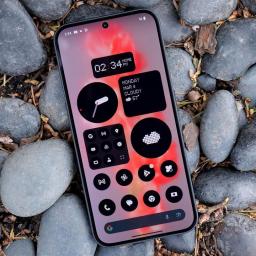 |
by Sam Rutherford on (#6K3Q2)
Nothing says its latest device - the Phone 2a - is a mid-range handset. And just going by its specs, which include a 6.5-inch 120Hz OLED screen, up to 12GB of RAM and a big 5,000 mAh battery, that seems right. But starting at $349, it's positioned more like a budget offering which makes it even more appealing. That's because in a category where device makers often cut corners to hit a specific price, the Phone 2a combines solid components with a unique design to deliver a handset that looks good and is big on value. So while there are a couple of hiccups for potential buyers in the US, Nothing has created an engaging option in a sea of boring budget phones.Design and display: Definitively distinctiveNothing's aesthetic is unmistakable. It's inspired by 90s retro gadgets with translucent plastic like old Gameboys but remixed with a more modern and cohesive finish. This lets you see a number of its components like NFC antennas (which is the disc surrounding the rear cameras) without it becoming distracting. That said, on the Phone 2a, Nothing switched things up by moving its cameras to the middle and rearranging its Glyph lights, which gives the back more of a face while a small red accent provides a pop of color. It's available in black and white color schemes, with the former sometimes making me feel like I'm looking at Wall-E's emo cousin.Photo by Sam Rutherford/EngadgetAnother departure from Nothing's previous handsets is that the Phone 2a features a polycarbonate back instead of a glass one. Now this might seem like a bad thing, but this device is a reminder of how nice plastic can be when it's done well. Nothing says the phone's subtly rounded edges wouldn't be possible to do with glass. While I'm not sure that feature is a bona fide selling point, it does feel good. Additionally, the choice of material results in something that feels a lot lighter than it looks, which is nice compared to traditional glass bricks. The Phone 2a weighs just 6.7 ounces (190 grams), which is less than a Pixel 7a (6.82 ounces/193.5 grams) despite the latter boasting a significantly smaller 6.1-inch display.As for the screen itself, the 6.5-inch OLED panel delivers punchy colors and surprisingly good brightness of around 700 nits during normal use with peaks of up to 1,300 nits. The only thing I struggled with was the in-screen fingerprint reader, which took a few registrations to get it dialed in before it would unlock every time.Performance: More than good enough for the moneyPhoto by Sam Rutherford/EngadgetNothing is bucking conventional wisdom by opting for a Mediatek Dimensity 7200 Pro chip instead of something from Qualcomm. Memory starts at 8GB, though in the US, the only config features 12GB of RAM and 256GB of storage. And while its Geekbench 6 scores (1,123 single-core and 2,603 multi-core) were a bit behind what I got from a Pixel 7a (1,442 single-core and 3,639 multi-core), it felt speedy and responsive during normal use. The only small issue is that sometimes scrolling through websites or social media wasn't quite as smooth compared to more expensive rivals. But unless you're hoping to do some serious mobile gaming, the Phone 2a has more than enough oomph to go around.Cameras: Better than your average budget handsetA challenge for both budget phone makers and smaller companies like Nothing is keeping up with big names like Samsung and Google. But unless you're a real stickler for image quality, the Phone 2a is good enough. It did a fine job during the day of producing pics that you won't be embarrassed to post on social media. Both the main and ultra-wide cameras are based on 50-megapixel sensors that capture warm tones and produce color saturation that's a touch richer than what I got from a Pixel 7a. That said, if you zoom in, you'll notice that Google's phone delivers slightly sharper photos with more detailed textures. At night, when budget phones tend to struggle a bit more, the Phone 2a's images were slightly darker than similar shots taken with a Pixel 7a, as expected, but they were still more than serviceable. Sometimes, Nothing's pics were actually less grainy than Google's.Battery life: 5,000 mAh goes a long wayPhoto by Sam Rutherford/EngadgetThanks to its large 5,000 mAh battery, the Phone 2a turned in one of the best times we've seen from a budget handset. On our video rundown test, it lasted 23 hours and 47 minutes, which is just shy of the Nothing Phone 2's mark of 24:25 and way better than similarly priced rivals like the Pixel 7a (17:41).When it comes to charging, though you don't get support for wireless power (which is understandable on a phone in this price range), the Phone 2a does support wired charging at up to 45 watts, which is faster than some flagship phones like the Pixel 8.US availability and carrier infoOne of the biggest bummers about the Nothing Phone 2a is that while it will be readily available online in Europe, folks in the US should know that there are a few extra hurdles to jump through. The first is that in order to buy one, customers will need to sign up for the company's Developer program. Thankfully, this can be done for free and as soon as you do, you'll get a link to purchase the Phone 2a directly from Nothing. Additionally, while the handset does support 5G on T-Mobile via the N41 band, you won't get any 5G on AT&T or Verizon, which severely limits the appeal for people on those networks.Wrap-upPhoto by Sam Rutherford/EngadgetOn paper, the Phone 2a has pretty much everything I look for in a good budget device. It's got a solid build including IP54 water resistance, a bright screen and excellent battery life. While its performance isn't earth-shattering, it still feels snappy even when compared to slightly more expensive rivals. But what really elevates the Phone 2a is that it accomplishes all this without erasing its personality in the name of cost-cutting. There simply isn't another handset in this price range that looks this good. Nothing also pays attention to small details like the phone's crunchy pseudo-analog sound effects that help marry its distinctive design with its custom UX and dot-matrix-inspired widgets. I just wish the Phone 2a was easier to buy and had better 5G support in the US.This article originally appeared on Engadget at https://www.engadget.com/nothing-phone-2a-review-a-budget-phone-thats-packed-with-personality-123040337.html?src=rss
|
 |
by Mat Smith on (#6K3Q3)
The creator of a popular Nintendo Switch emulator, Yuzu, appears to have agreed to settle Nintendo's lawsuit against it, less than a week since the games company accused the emulator's creator of piracy at a colossal scale."A joint final judgment and permanent injunction filed Tuesday says developer Tropic Haze will pay the games company $2.4 million - along with a long list of concessions. The people behind Tropic Haze must halt all activities related to offering, marketing, distributing or trafficking in Yuzu emulator or any similar software that circumvents Nintendo's technical protection measures." No more emulating, then. It must even surrender the emulator's web domain (including any variants) to Nintendo. The website is still live at time of writing.In recent years, Nintendo has increased its efforts to quash popular emulators and game piracy sites. It sued ROM-sharing website RomUniverse for $2 million and helped send hacker Gary Bowser to prison. Will this latest lawsuit stop people trying to emulate Nintendo consoles and games? No. But it'll likely deter anyone trying to make a buck out of it.We also take a look back at how Steam reshaped video games in the past two decades.- Mat SmithThe biggest stories you might have missedNational Guardsman who leaked US defense secrets on Discord agrees to 16-year plea dealSteam defined the modern video game industryShure's first wireless lapel mic can connect to your phone without a receiverYou can get these reports delivered daily direct to your inbox. Subscribe right here!Apple announces new MacBook Airs with M3 chipsThis is the same CPU that powers the latest MacBook Pro laptops.AppleAs predicted yesterday, Apple revealed new MacBooks. This time, it's MacBook Air laptops housing the company's latest Apple Silicone: M3 chips. No Pro or Max options, but it's also just' a MacBook Air - the company's entry-level laptop. Expect performance increases of 17 percent in single-core tasks and 21 percent in multi-core tasks, according to Apple's estimates. As before, both computers max out at 24GB of RAM and 2TB of storage. There is now support for up to two external displays when the laptop is closed, as well as Wi-Fi 6E.The 13-inch M3 MacBook Air is $1,099, while the 15-inch model starts at $1,299. The M2 13-inch model will remain at $999 - now mighty tempting at that price. Both of the new MacBook Air models are available to pre-order today.Continue reading.Twitter's former CEO and other execs are suing X for $128 million in unpaid severanceThe group says Musk made up a fake cause" for their firing.A group of former Twitter executives, including former CEO Parag Agrawal, is suing Elon Musk and X over millions of dollars in unpaid severance benefits. The claims date back to the chaos surrounding Musk's takeover of the company in October 2022. The lawsuit cites Musk biographer Walter Isaacson's account of the events, which explains Musk rushed to close the Twitter deal a day early to fire the executives for cause" just before their final stock options were set to vest.Continue reading.Instagram finally lets you edit DMsIf you're quick.Meta just rolled out a software update for Instagram that finally allows DM edits. However, you have to do it within 15 minutes of sending the message. It seems the messages won't be tagged as edited,' like Apple's Messages or WhatsApp, either.Continue reading.This article originally appeared on Engadget at https://www.engadget.com/the-morning-after-switch-emulator-creators-settle-lawsuit-with-nintendo-for-24-million-121645766.html?src=rss
|
 |
by Steve Dent on (#6K3HX)
The battle between AI chatbots is more than a two-horse race. Anthropic, the company formed by several ex-OpenAI employees, claims its new Claude 3 language model outperforms ChatGPT and Google's Gemini in several key industry benchmarks. It even hit "near-human" levels on some tasks, the company wrote in a blog.There are three new chatbots under the Claude 3 umbrella, including Haiku, Sonnet, and Opus. Sonnet powers the Claude.ai chatbot and is offered for free with an email sign-in. Meanwhile, Opus is the largest and most powerful LLM and will be available with a $20 per month subscription via the "Claude Pro" service. It's also multi-modal, so it can work with both text and image inputs, unlike past versions.All Claude 3 models "can power live customer chats, auto-completions and data extraction tasks where responses must be immediate and in real-time," the company said. On top of promising "near-instant results," they can supposedly handle longer, multi-step instructions with increased accuracy.AnthropicOpus showed better graduate-level reasoning than GPT-4, scoring 14.7 percent higher in that test than GPT-4. It also beat OpenAI's chatbot in tasks involving math, coding, reasoning and knowledge.They also top past Claude models. "For the vast majority of workloads, Sonnet is 2x faster than Claude 2 and Claude 2.1 with higher levels of intelligence. It excels at tasks demanding rapid responses, like knowledge retrieval or sales automation. Opus delivers similar speeds to Claude 2 and 2.1, but with much higher levels of intelligence," according to Anthropic.Meanwhile Haiku, the smallest version of Claude 3, is "the fastest and most cost-effective model on the market." To that end, it's capable of reading a dense research paper complete with charts and graphs in under three seconds.The company also noted that Claude 3 "can process a wide range of visual formats, including photos, charts, graphs and technical diagrams," aiding companies that use PDFs, flowcharts, or presentation slides. It'll also be less likely to refuse harmless content thanks to a more nuanced understanding of requests, while still recognizing "real harm."Anthropic has said that Claude AI is guided by 10 secret foundational pillars of fairness. Claude 3 was trained on both nonpublic internal and public-facing data, using hardware from Amazon Web Services (AWS) and Google Cloud (Amazon recently invested $4 billion in Anthropic).Claude 3 Opus and Claude 3 Sonnet are available now through Anthropic's API, with Haiku set to follow soon. Sonnet is also accessible through Amazon Bedrock and in private preview on Google Cloud's Vertex AI Model Garden.This article originally appeared on Engadget at https://www.engadget.com/anthropic-says-its-new-claude-3-ai-chatbot-scores-better-on-key-benchmarks-than-gpt-4-071343736.html?src=rss
|
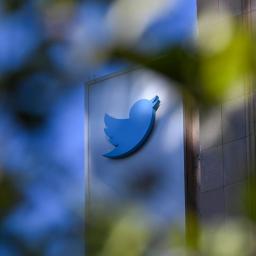 |
by Karissa Bell on (#6K3A4)
A group of former Twitter executives, including former CEO Parag Agrawal, are suing Elon Musk and X over millions of dollars in unpaid severance benefits. The claims date back to the chaotic circumstances surrounding Musk's takeover of the company in October 2022.When Musk took control of the company, his first move was to fire Agrawal, CFO Ned Segal, chief legal officer Vijaya Gadde and general counsel Sean Edgett. According to the lawsuit, Musk had special ire" for the group because of the role they played in the months-long court battle that forced Musk to follow through with the acquisition after he attempted to back out of the deal. According to the lawsuit, Agrawal is entitled to $57.4 million in severance benefits, Segal is entitled to $44.5 million, Gadde $20 million and Edgett $6.8 million, for a total of about $128 million.The lawsuit cites Musk biographer Walter Isaacson's account of the events, which explains that Musk rushed to close the Twitter deal a day early so he could fire the executives for cause" just before their final stock options were set to vest. According to Isaacson, Musk bragged that the legal maneuver saved him about $200 million.Musk doesn't pay his bills, believes the rules don't apply to him, and uses his wealth and power to run roughshod over anyone who disagrees with him," the lawsuit states,Because Musk decided he didn't want to pay Plaintiffs' severance benefits, he simply fired them without reason, then made up fake cause and appointed employees of his various companies to uphold his decision."X didn't respond to a request for comment on the lawsuit. Of note, it's not the first time former Twitter employees have sued the company for failing to pay severance benefits. A separate lawsuit claimed Twitter owed former workers more than $500 million in unpaid severance. Agrawal, Segal and Gadde also previously sued the company over unpaid legal bills as a result of shareholder lawsuits and other investigations that resulted from Musk's takeover,This article originally appeared on Engadget at https://www.engadget.com/twitters-former-ceo-and-other-execs-are-suing-elon-musk-and-x-for-128-million-in-unpaid-severance-231428042.html?src=rss
|
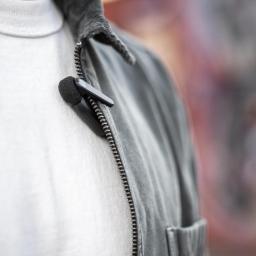 |
by Will Shanklin on (#6K3A5)
On Tuesday, Shure unveiled its better-late-than-never entry into the creator-focused wireless consumer lapel mic space. The audio company's MoveMic system - available in single-channel (the $249 MoveMic One) and dual-channel (the $349 MoveMic Two) models - joins an increasingly crowded space of wireless lavalier mics alongside three tiers of Rode's Wireless Go system and two iterations of DJI's Mic.Most products in this space require a receiver for your phone, but Shure offers direct-to-phone wireless transmission - including for two mics in the dual-channel model. But the catch is that it only works when using Shure's MOTIV apps (available on iOS and Android), which won't be everyone's cup of tea.For more versatile recording (including with cameras, computers and third-party phone apps), you'll have to use the MoveMic Receiver. It's available as a standalone $199 purchase or as part of a $499 bundle with two dual-channel mics.ShureThe mic has subtle styling, with most of its body designed to tuck away behind clothing. Each mic weighs 8.2g and measures 46 x 22mm, and it has an IPX4 rating for resistance to at least light splashes and sprays of water (including rain).The MoveMic has a 50Hz to 20kHZ frequency range with a tolerance of +/-1dB. Its range covers up to 100ft away (direct line) from the paired device. Shure estimates eight hours of recording per mic, plus another two full charges when using its bundled charging case.The MoveMic two bundle includes two lapel mics, a charging case and receiver.ShureShure's entry into this space isn't cheap. The single-channel MoveMic One costs $249, the dual-channel model (including two mics) jumps to $349 and a bundle with a pair of mics with a receiver runs $499.By comparison, the Rode Wireless Go II costs $299 for a bundle with a pair of dual-channel mics and a receiver, and the DJI Mic 2's equivalent package is $349. (And that isn't including those companies' budget models.) Shure is banking on its industry reputation and the MoveMic's more subtle appearance to justify the extra cost. Still, creators and video journalists will want to ask themselves whether those warrant the premium before taking the plunge.This article originally appeared on Engadget at https://www.engadget.com/shures-first-wireless-lapel-mic-can-connect-to-your-phone-without-a-receiver-221517242.html?src=rss
|
 |
by Will Shanklin on (#6K3A6)
Jack Teixeira, the Massachusetts Air National Guardsman accused of leaking classified defense secrets on Discord, has pled guilty. The New York Times reports the 22-year-old withdrew his not-guilty plea on Monday, trading a guilty admission for up to around 16 years in prison. Had he gone to trial and lost, he could have faced up to 60 years.In a Boston federal court, Teixeira pleaded guilty to six counts of willful retention and transmission of national defense information" under the Espionage Act. Federal authorities arrested the airman at his mother's house last April.The Air National Guardsman is accused of sharing classified documents on a Minecraft-focused Discord server in late 2022. The posted files included volumes of information about the war in Ukraine (including details about military equipment and Russian and Ukrainian troop movements), as well as Russia's attempts to stockpile more weapons from Egypt and Turkey. The content eventually landed on 4chan, Telegram and other Discord servers.The leaked docs also contained a report about the hacking of an unnamed American company by a foreign adversary" and details about a plot to assault US troops serving abroad.The government said it didn't find evidence of deliberate espionage motives, nor did it accuse Teixeira of acting as a whistleblower in the mold of Edward Snowden. Instead, prosecutors concluded he wanted to gain status with his online friends. The New York Times reports that a senior federal law enforcement official, speaking anonymously to the paper, said the DOJ wouldn't have agreed to the reduced sentencing if it had uncovered more malicious motives.The judge presiding over the case, Indira Talwani, scheduled a hearing in September to finalize her endorsement of the deal. The sentencing guidelines range from 11 to more than 16 years in prison. His lawyer, Michael K. Bachrach, told reporters Teixeira's immaturity played a pivotal role while promising he would push for the lowest sentence. He is very much a kid," the attorney reportedly said. We will be able to establish why his youth played a substantial role."A NYT investigation of more than 9,500 of Teixeira's messages, published last May, revealed an obsession with weapons, mass shootings, shadowy conspiracy theories - and proving he was in the right, and in the know."This article originally appeared on Engadget at https://www.engadget.com/national-guardsman-who-leaked-us-defense-secrets-on-discord-agrees-to-16-year-plea-deal-215721722.html?src=rss
|
 |
by Will Shanklin on (#6K37X)
Tropic Haze, the popular Yuzu Nintendo Switch emulator developer, appears to have agreed to settle Nintendo's lawsuit against it. Less than a week after Nintendo filed the legal action, accusing the emulator's creators of piracy at a colossal scale," a joint final judgment and permanent injunction filed Tuesday says Tropic Haze has agreed to pay the Mario maker $2.4 million, along with a long list of concessions.Nintendo's lawsuit claimed Tropic Haze violated the anti-circumvention and anti-trafficking provisions of the Digital Millennium Copyright Act (DMCA). Without Yuzu's decryption of Nintendo's encryption, unauthorized copies of games could not be played on PCs or Android devices," the company wrote in its complaint. It described Yuzu as software primarily designed to circumvent technological measures."Yuzu launched in 2018 as free, open-source software for Windows, Linux and Android. It could run countless copyrighted Switch games -including console sellers like The Legend of Zelda: Breath of the Wild and Tears of the Kingdom, Super Mario Odyssey and Super Mario Wonder. Reddit threads comparing Switch emulators praised Yuzu's performance compared to rivals like Ryujinx. Yuzu introduces various bugs across different titles, but it can typically handle games at higher resolutions than the Switch, often with better frame rates, so long as your hardware is powerful enough.A screenshot from Yuzu's website, showing The Legend of Zelda: Breath of the WildTropic Haze / NintendoAs part of an Exhibit A attached to the proposed joint settlement, Tropic Haze agreed to a series of accommodations. In addition to paying Nintendo $2.4 million, it must permanently refrain from engaging in activities related to offering, marketing, distributing, or trafficking in Yuzu emulator or any similar software that circumvents Nintendo's technical protection measures."Tropic Haze must also delete all circumvention devices, tools and Nintendo cryptographic keys used in the emulator and turn over all circumvention devices and modified Nintendo hardware. It even has to surrender the emulator's web domain (including any variants or successors) to Nintendo. (The website is still live now, perhaps waiting for the judgment's final a-okay.) Not abiding by the settlement's agreements could land Tropic Haze in contempt of court, including punitive, coercive and monetary actions.Although piracy is the top motive for many emulator users, the software can double as crucial tools for video game preservation -making rapid legal surrenders like Tropic Haze's potentially problematic. Without emulators, Nintendo and other copyright holders could make games obsolete for future generations as older hardware eventually becomes more difficult to find.Nintendo's legal team is, of course, no stranger to aggressively enforcing copyrighted material. In recent years, the company went after Switch piracy websites, sued ROM-sharing website RomUniverse for $2 million and helped send hacker Gary Bowser to prison. Although it was Valve's doing, Nintendo's reputation indirectly got the Dolphin Wii and GameCube emulator blocked from Steam. It's safe to say the Mario maker doesn't share preservationists' views on the crucial historical role emulators can play.Despite the settlement, it appears unlikely the open-source Yuzu will disappear entirely. The emulator is still available on GitHub, where its entire codebase can be found.This article originally appeared on Engadget at https://www.engadget.com/makers-of-switch-emulator-yuzu-quickly-settle-with-nintendo-for-24-million-203204698.html?src=rss
|
 |
by Karissa Bell on (#6K37Y)
X has, once again, quietly changed its rules around deadnaming and misgendering without an explanation. With the latest change, it seems that there will be no penalties for misgendering or deadnaming people on X after al, except in cases when it may be required by local laws."The update, which was first spotted by Mashable, comes after X appeared to reinstate some aspects of Twitter's former policy, which fell under its hateful conduct rules. Prior to Elon Musk's takeover, Twitter had barred targeted deadnaming and misgendering. That section of the company's rules then disappeared last April. Then, last week, ArsTechnica noted that the policy was quietly updated to indicate that X would reduce the visibility of posts that purposefully use different pronouns to address someone other than what that person uses for themselves, or that use a previous name that someone no longer goes by as part of their transition."While it wasn't a full reversal of the earlier policy - under the company's previous leadership, intentional misgendering was grounds for a suspension - it seemed that there once again would be penalties for this type of harassment. Now, that section of Twitter's rules is prefaced with where required by local laws."As with so much of what happens at X, there is significant confusion about the policy as the company's rules seem to change based on the whims of Musk rather than a considered process. This was on display over the last fewldays as Musk fielded several complaints from right-wing personalities about last week's change. On Thursday, Musk told one such account that the update is just about repeated, targeted harassment of a particular person." But by Saturday, Musk was offering a new explanation. Turns out this was due to a court judgment in Brazil, which is being appealed, but should not apply outside of Brazil," he said.X didn't respond to a request for comment about the policy or why it was changed twice in a matter of days. But Musk is known to be sympathetic to people who regularly engage in anti-trans harassment. One of his first moves after taking over the company was to reinstate a number of accounts banned for violating the company's previous hateful conduct policy. He has also repeatedly mocked people who specify their pronouns and publicly criticized X staff for attempting to apply the company's freedom of speech, not reach" policy to a transphobic documentary.This article originally appeared on Engadget at https://www.engadget.com/x-walks-back-its-misgendering-policy-after-right-wing-complaints-202433498.html?src=rss
|
 |
by Lawrence Bonk on (#6K34N)
Apple revealed some new M3 MacBook Air laptops today and one of the marquee features is that they can drive two external displays while the lid is closed. It's pretty weird when the Air line gets a feature missing from the beefier MacBook Pro line, but Apple's on top of it. The company just announced that this feature is also coming to standard M3 MacBook Pro laptops via a software update, as reported by 9to5Mac.There's no details as to which software update would include the new tool, though macOS Sonoma 14.4 is in active development, so that's a possibility. The feature should work exactly how it does with the forthcoming M3 MacBook Air, as the two lines share a processor and a similar architecture.This update is going to be for 14-inch MacBook Pro laptops with the standard M3 chip. The more powerful versions with the M3 Pro and Max chips can already do this, so the 16-inch model doesn't require a software update. Prior to this, you could only use the regular M3 MacBook Pro to drive a single external monitor with the lid closed.Apple Silicon MacBook Pros have been able to drive multiple external displays all the way back to the M1 Pro chip, but never with standard M-series chips. Apple hasn't offered up a reason as to why this took so long to get going on chips without Pro or Max in the name. In any event, this is going to be huge for current M3 MacBook Pro owners looking for more screen real estate.This article originally appeared on Engadget at https://www.engadget.com/the-m3-macbook-pro-is-getting-multi-display-support-just-like-the-air-193844930.html?src=rss
|
 |
by Lawrence Bonk on (#6K34P)
Google just announced that some Pixel phones are getting next-gen call screening. This improves on the pre-existing Call Screen feature by implementing a new Hello button. Once tapped, the system will deploy Google Assistant to speak on your behalf.The digital assistant will ask the caller why they're trying to reach you, and you'll be able to hear the response in real-time. If it sounds important, you can interrupt and begin the call. If not, you can kick them to the curb and go back to watching TV.Google Assistant already worked to screen calls in a similar way, but the Hello button gives the user ultimate control as to when to begin the screening process. There's even an option to tell the caller to wait a little bit, if you can't get to the phone quite yet. In addition to the real-time element, the tool still captures transcripts of these screenings to peruse at your leisure. The new Call Screen update is only available for the Pixel Fold and Pixel 6 phones and newer.This is part of a larger March features drop for Pixel phones. Google's smartphones will now be able to share 10-bit HDR videos directly to Instagram, with no processing required. This is similar to the approach Samsung recently took with its Galaxy S24 native camera update.The features drop also expands the company's recently-launched Circle to Search tool to Pixel 7 smartphones. As the name suggests, this lets people search for stuff by simply drawing a circle around the object. The tool was previously only available for Pixel 8 and Galaxy S24 users.This article originally appeared on Engadget at https://www.engadget.com/pixel-phones-just-got-next-gen-call-screening-190034396.html?src=rss
|
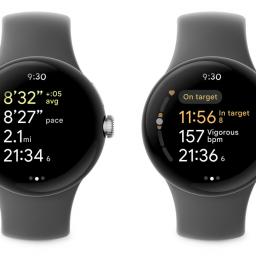 |
by Mariella Moon on (#6K34Q)
Google is releasing new features for the first-gen Pixel Watch, and they include the health-monitoring capabilities that launched with its successor. The older wearables will now be able to detect whether you're working out and can automatically start tracking your activity and then stop when you're done. In particular, it works for running, walking, elliptical training, spinning, outdoor biking and rowing.You'll also be able to track the time you spend in different heart rate zones, which could help you optimize your workouts. Plus, you'll be able to set a goal pace for your exercise sessions to get a notification for when you're not performing up to par. In case you want your first-gen Pixel Watch to help you feel more relaxed instead, simply fire up the Fitbit Relax App on the device to guide you through some breathing exercises.For travelers, though, Google's most exciting update for watches isn't just for its Pixel line. The company has rolled out public transit directions for devices running Wear OS 3 and above, which means you can check what kind of public transportation you can take right on your wrist - it will even display your public transit options' real-time departure schedules. You'll now also be able to navigate an unfamiliar location without taking out your phone through a compass-enabled map view on your watch.The company is releasing features for different devices under its Pixel line, as well. Pixel phones will now be able to share 10-bit HDR videos directly to Instagram Reels and will be able to upload Ultra HDR Photos to the app. In addition, the Pixel 8's "Circle to Search" feature is coming to Pixel 7 and Pixel Pro phones, giving you a quick way to do Search queries without having to switch apps. All you have to do is draw a circle around or highlight an image, a video or a piece of text to look up the information you need. Finally, a "Call Screen" feature will give you access to a "hello" chip you can tap while a call is being screened. Google Assistant can ask the caller to speak, so you can get an idea of why they're calling, and it can also ask them to wait a bit longer if you can't pick up their call just yet.This article originally appeared on Engadget at https://www.engadget.com/google-updates-the-first-gen-pixel-watch-with-health-monitoring-features-190002033.html?src=rss
|
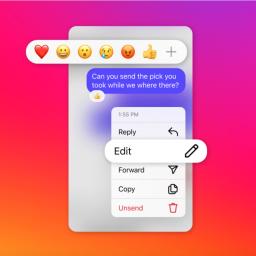 |
by Lawrence Bonk on (#6K34R)
Instagram launched direct messaging tools way back in 2013, but there hasn't been a way to edit them after the fact. That changes today. Meta just rolled out a software update for the Instagram app that finally allows for DM edits, with one major caveat. You only have 15 minutes to make any changes.Here's how it works. Once you send a direct message and realize you made a huge blunder, like accidentally" professing your love to an old college buddy, just press and hold on the sent message. This will create a dropdown menu. Look for edit" and make the required changes. Nobody will ever be the wiser, as long as you got there within 15 minutes.MetaThis isn't the only change to DMs found with today's update. You can also pin up to three of your favorite direct messages on top of the feed, which is useful in the case of ongoing conversations. This can be done with standard one-on-one chats and group chats. Just hold on the conversation tab, look for the dropdown and tap pin" to make the move.The update also makes it easier to toggle read receipts on and off, depending on personal preference. The rest of today's new features are cosmetic. There are new DM themes, and some include unique animations. Finally, the update features a way to save your favorite stickers in your DMs for easy access. Just hold on the sticker and it'll be there next time you want it.Meta's constantly making changes to Instagram. Back in January, it began testing a feature that lets users access a secondary photo grid that only close friends can see. Late last year, the app got customizable story templates.This article originally appeared on Engadget at https://www.engadget.com/instagram-finally-lets-you-edit-dms-183412692.html?src=rss
|
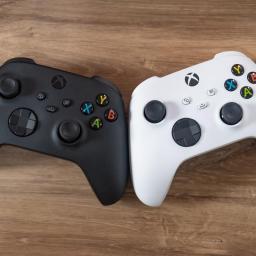 |
by Kris Holt on (#6K31N)
Microsoft has announced its second games showcase of 2024 and this one is all about projects from its third-party partners. The second Partner Preview stream is set for March 6 at 1PM ET. It will run for around 30 minutes and feature more than a dozen new trailers from publishers including Capcom, Nexon and EA.Three games have been confirmed for the showcase. We'll find out details about traversal and combat in Tales of Kenzera: Zau, an EA-published 2D Metroidvania game that's set to arrive next month. Abubakar Salim, who voiced Bayek in Assassin's Creed Origins, is the game's creative lead and will narrate the Partner Preview trailer.In addition, we'll see gameplay from Capcom's strategy-action game Kunitsu-Gami: Path of the Goddess and The First Berserker: Khazan, an action RPG from Nexon. Microsoft is also promising details on more titles that are bound for Xbox, PC and Game Pass. This is a common refrain every time one of these streams takes place, but since we know it's coming to Game Pass on its release day, perhaps this will finally be when we learn more about Hollow Knight: Silksong.You'll be able to watch the stream on Xbox channels on YouTube and Twitch (YouTube streams will be available in 4K, but Twitch is limited to 1080p). Microsoft says it will make the showcase available in more than 40 languages, including American Sign Language, British Sign Language and English Audio Descriptions. For the first time, Microsoft will offer versions of an Xbox stream in Bengali, Mori, Punjabi (Gurmukhi), Swahili, Tamil, Urdu and Zulu.This article originally appeared on Engadget at https://www.engadget.com/microsoft-is-running-an-xbox-partner-showcase-on-march-6-173008112.html?src=rss
|
 |
by Lawrence Bonk on (#6K31P)
Apple's Magic Keyboard for iPad is 40 percent off right now via Amazon. That brings the price down to $180, which is a savings of around $120. It's not the lowest price we've ever seen for the 11-inch keyboard, but it's certainly close. Typical sales drop it to around $250 or so, so this is still one heck of a deal.This is the perfect keyboard to turn your 11-inch iPad Pro or Air into a standalone workstation. There's a reason, after all, why it ended up on our list of the best iPad accessories. It magnetically attaches to the tablet, with a hinge that keeps the screen floating above the keyboard. In other words, it basically turns your iPad into a laptop.We praised Apple's Magic Keyboard for its emphasis on comfort and the precise trackpad. There are dozens upon dozens of competing third-party products out there, but none of them get the job done quite like this luxury keyboard. The major issue here is the price, which this sale somewhat alleviates.There is one other potential issue on the horizon. There are rumors circulating that Apple is about to announce a new range of iPads, which may or may not work with this keyboard. If you're buying a keyboard for an iPad you already own, that's no big deal. If you want to buy both at once, however, you should wait for an official announcement.Follow @EngadgetDeals on Twitter and subscribe to the Engadget Deals newsletter for the latest tech deals and buying advice.This article originally appeared on Engadget at https://www.engadget.com/apples-magic-keyboard-for-the-11-inch-ipad-pro-and-air-is-40-percent-off-172148756.html?src=rss
|
 |
by Jeff Dunn on (#6K31Q)
Both Amazon and Best Buy have kicked off new sales on Samsung's Galaxy S24 lineup, taking up to $150 off the unlocked versions of the recently released smartphones. The 6.8-inch Galaxy S24 Ultra and the 6.7-inch Galaxy S24 Plus are each $150 off at $1,150 and $850, respectively, while the 6.2-inch Galaxy S24 is $100 off at $700. We've seen a handful of trade-in and gift card offers for the phones since they were released in late January, but these are their largest cash discounts to date. As a reminder, the S24 Ultra and S24 Plus start with 256GB of storage, while the base S24 starts with 128GB. If you need more space, higher-capacity models are also discounted. The deals apply to multiple color options, too.Google's Pixel 8 and Pixel 8 Pro remain the top picks in our guide to the best Android phones: They take better photos, generally provide a cleaner software experience and typically cost less. That said, we note Galaxy S24 Ultra as a good alternative for those who're willing to pay for more premium hardware. It runs on a faster chip (Qualcomm's Snapdragon 8 Gen 3), has a gorgeous OLED display and gets longer battery life. Its titanium frame should be a bit more durable long-term, plus it comes with Samsung's S Pen stylus. Samsung did jack up the price by $100 over last year's model, though this deal neuters that hike at least a little bit. We gave the Galaxy S24 Ultra a score of 89 in our review earlier this year.The smaller Galaxy S24 and Galaxy S24 Plus aren't quite as high-end but may still be worthwhile if you want to avoid a Pixel. Both earned a score of 87 in our review. They still get you a Snapdragon 8 Gen 3 chip, a rich 120Hz OLED display and seven years of software updates. That software includes the same suite of hit-or-miss AI features, including a live language translation tool. The S24 Plus lasts longer on a charge, but the base S24 may appeal to those who want something more compact. The S24 Ultra has a more advanced camera array, though, with a sharper main lens and an extra telephoto lens with 5x optical zoom. These two also use aluminum frames instead of titanium. We'll inevitably see larger discounts on each of these phones in the months ahead, but if you've been sitting on an older Galaxy device and want to upgrade today, this is a decent chance to save.Follow @EngadgetDeals on Twitter and subscribe to the Engadget Deals newsletter for the latest tech deals and buying advice.This article originally appeared on Engadget at https://www.engadget.com/samsungs-galaxy-s24-phones-are-up-to-150-off-at-amazon-and-best-buy-164520013.html?src=rss
|
 |
by Jessica Conditt on (#6K31R)
Gather 'round, children, and let me tell you a story about the old bugaboo we used to call DRM.Digital Rights Management was the beast under every gamer's bed in the mid-2000s, an invisible bit of software baked into game discs that dictated and tracked player behavior under the guise of preventing piracy. DRM software, like SecuROM, limited the times a game could be downloaded and forced players to regularly connect to the internet for authentication checks, at a time when less than half of American adults had reliable broadband connections. DRM features soured the releases of BioShock, Mass Effect and Spore, and by 2010, anti-piracy software had rendered Assassin's Creed 2 and Splinter-Cell: Conviction unplayable. When Microsoft attempted to release the Xbox One with always-on DRM features in 2013, intense vitriol from fans forced the company to reverse its plans at the 11th hour. There were lawsuits. DRM was a curse word.Meanwhile, Valve was building out Steam. When it landed in 2003, the digital PC storefront was designed to streamline the patch process for games like Counter-Strike and make it easier for Valve to implement anti-piracy and anti-cheat measures. Steam was made to be a DRM machine. In 2004, with the release of Half-Life 2, Valve made Steam a requirement for every player, and even those who'd purchased new, physical copies of the game had to boot up the launcher first. There was some low-level grumbling, but PC players were used to being lab rats, and Half-Life 2 was good enough to drown out the dissent. Steam adoption skyrocketed. So, naturally, Valve turned it into a store for third-party games.While other publishers were fighting with players over DRM features in individual titles and consoles, Steam quietly added dozens, then hundreds, then thousands of games each year. Today, Steam has 132 million monthly active users and an estimated 103,000 games, more than any other mainstream distribution service. Nearly all of these titles are playable only while connected to Steam - even after paying full price, even after downloading, even in offline mode. This has done nothing to stop Steam from becoming more essential to more players each year.Competition is good, but the PC market has no competition," Super Meat Boy co-creator Tommy Refenes told Engadget in 2018. There is only Steam."The widespread adoption of anti-piracy software marked an era in video games where players felt like they didn't really own the products they were buying. And then, this practice became normal. Broadband saturation continued to climb, the market for physical media dissolved into pixelated dust and streaming entertainment media found its foothold. Today, Xbox, PlayStation, Nintendo, Epic Games and most major publishers have their own digital stores with proprietary DRM features. However, Steam is entrenched as the industry's largest DRM machine because it's the most popular digital games storefront, period. And if the last 20 years are any indication, that's not going to change any time soon.Did you hear that? That was the sound of our collective Steam libraries, representing trillions of dollars in purchased games, expelling a dusty sigh of relief. Because if Steam disappears, all of our games do too.It's a chilling thought - Steam's demise would enact immediate, catastrophic chaos across the video game industry, gutting players' libraries and cutting off one of the most direct points of sale for developers of all sizes. Steam feels too big to fail, and Valve operates it as such. Valve is a private company valued at $6.5 billion in 2021,and CEO Gabe Newell, himself, is a billionaire. The studio is similar to Nintendo in that it's able to ignore gaming trends and carry on doing whatever it wants at any given time, while Steam prints money and its most ardent fans cheer the studio on with friendly memes. Hail, Gaben!Steam popularized the 70/30 revenue split, giving developers on the platform 70 percent of the money their games generate and pocketing the rest. Apple and Google copied this formula with their mobile app stores. When it debuted in 2018, the Epic Games Store shaped its entire marketing campaign around taking on Steam and dismantling its rev-share ratio, claiming it was exploitative and unfair, especially to indies. Epic offered every developer an aggressive split of 88/12, and CEO Tim Sweeney literally dared Valve to match it.Valve barely blinked. The studio shifted its Steam payout schedule slightly, offering a 75 percent cut on games that made more than $10 million, and 80 percent on anything that brought in more than $50 million. Epic eventually shifted its attention away from Valve and moved to a more vulnerable target in the rev-share space: Apple.If you were running a store without competition and you were making billions of dollars a year, how much time and energy would you dedicate to making it better?" Refenes asked in 2018, during the launch of the Epic Games Store. How much money would you spend to improve the experience for everyone that uses it, if the end result is you would make the same or possibly less money? My answer is, The minimum amount of time, effort and money required."Valve has become more hands-off with Steam as it's aged. In the platform's early days, developers would pitch their games to actual people at Valve, who would launch a handful of projects on the storefront every week, ensuring plenty of attention for each title. For small studios, getting a game on Steam was like hitting the jackpot. This changed in 2012, when Valve implemented Greenlight, a process that allowed players to choose which games would make it to Steam (after developers submitted a $100 entry fee). Greenlight eventually evolved into Early Access - a system still around today and the standard on other platforms too - and the number of games on Steam rose astronomically in just a few years.In 2013, Steam added 435 new games, according to Steamdb. In 2017, it added 6,947 games. This was a tumultuous period for developers, especially those who started production when Steam was a curated space, but ended up releasing their games into an unregulated and oversaturated marketplace.Indie developers Ben Ruiz and Matthew Wegner began building the stylish brawler Aztez in 2010, and it received a ton of pre-release hype. Aztez finally went live on Steam on August 1, 2017, but was immediately lost in the crowd.There were 40 other games that launched on August 1," Wegner told Engadget in October 2017.Ruiz added, If I was paying attention to Steam, maybe I wouldn't be so blindsided by what happened, but I'm also not necessarily sure what I would've done differently. If I'd have known like, oh, it's a saturated market now - what the fuck do you do? ...There's a billion indie games that come out on Steam every single day."Today, Steam is a self-sustained game-distributing machine with more than 100,000 titles and counting. Getting on Steam no longer equates instant success for any developer, but it's a necessary aspect of most release plans. There are other options: GOG, operated by The Witcher and Cyberpunk 2077 publisher CD Projekt, is one of just a few digital distributors committed to DRM-free game purchases; large publishers like Ubisoft, EA and Microsoft all have Steam-like storefronts and the Epic Games Store has a superior revenue split for developers. Still, giants like Microsoft and EA find it necessary to simultaneously release their games on Steam, handing Valve a cut of each purchase in the process.As a private company raking in endless piles of Steam cash, Valve has the freedom to operate on its own timeline. The company famously has a flat hierarchy with no strict management structure, and developers are encouraged to work on pet projects or just generally follow their hearts.As a result, Valve is an incredibly rich company that doesn't produce much. Its games are legendary, but there's a running joke in the industry that Valve can't count to three: Half-Life 2: Episode Two and Team Fortress 2 came out in 2007. Left 4 Dead 2 came out in 2009. Portal 2 came out in 2011. In 2020, the VR game Half-Life: Alyx landed as an entree into Valve's Index headset, which came out the previous year and cost $1,000. The studio is still ignoring an extremely disruptive bot invasion that began consuming TF2 in 2020, despite consistent pleas for support from dedicated players. In December 2023, Valve replaced Counter-Strike: Global Offensive with Counter-Strike 2, interrupting an ESL Pro League tournament in the process.Meanwhile, many of the writers who helped create Valve's most iconic franchises left the studio around 2017, after years of inactivity. In 2018, Valve hired all 12 developers at Firewatch studio Campo Santo, who were at the time working on a very-rad-looking new game, In the Valley of Gods. There have been no updates from that team since.Steam's unwavering success has helped turn Valve into a senior resort community for computer science nerds, where game developers go to live out their final years surrounded by fantastic amenities, tinkering and unsupervised. It's a lovely scenario, really. It's just not particularly productive.Matt T. Wood worked at Valve for 17 years, helping to build Left 4 Dead, Left 4 Dead 2, Portal 2, CS:GO and both episodes of Half-Life 2. He left in 2019 and is now preparing to release his first independent game, Little Kitty, Big City.Valve talks a lot about, like, you can do anything you want," Wood told Engadget in 2023. And it's like, well - that's never true. Valve has a direction, and they have a trajectory. And so, for me, it was realizing that the direction that Valve was going in was not a place that I wanted to be long-term. ...They were sitting on their laurels a little bit, and it's like they weren't really challenging themselves, taking risks or doing anything. Steam's making a lot of money so they don't really have to."Little Kitty, Big City is coming to Steam, of course.Valve is supremely skilled at making money off of other people's work, and Steam epitomizes this trait. The company did the same thing with Steam Machines back in 2014 too: Valve created a Steam Controller, but it never actually built a Steam Machine. Instead, Valve licensed its name to PC manufacturers, and these companies built boxes to beam Steam into people's living rooms. Valve offloaded manufacturing costs while collecting market data about actual demand for quasi-PC, quasi-console hardware. Valve never ended up making its own box (unless you view the Steam Deck as a Frankenstein hybrid of the Steam Controller and Steam Machines, which I do).The Steam Deck is the most exciting thing to come out of Valve in decades, and that's largely because the company actually seems dedicated to improving and supporting it. Valve seemingly gave up on VR hardware after the Index, but less than two years after the release of the Steam Deck, Valve dropped an OLED version featuring a gorgeous screen and other improvements.The Steam Deck is, of course, all about Steam. Just like Half-Life 2 was a clever ruse to get more people registered on Steam back in 2004, the Steam Deck is positioned to dominate the handheld PC market in 2024, and it comes with Steam installed.Today, digital distribution is the backbone of the industry (which I guess makes DRM the spinal fluid), and Steam is the undisputed leader in this space.Steam's legacy is a vast and varied landscape of games serving millions of individual libraries, some thousands of titles deep - all of which can disappear with a snap if Valve decides to stop, sell or pivot. It's a storefront that set the standard and refused to stop growing. It's entire studios of artists and writers devoured, and beloved franchises left to rot. It's a stranglehold that allows Valve to ignore market pressure from consumers, creators and competitors.Behind the curtain of the video game industry, there's Steam, constantly churning, powering everything.To celebrate Engadget's 20th anniversary, we're taking a look back at the products and services that have changed the industry since March 2, 2004.This article originally appeared on Engadget at https://www.engadget.com/steam-defined-the-modern-video-game-industry-163021533.html?src=rss
|
 |
by Kris Holt on (#6K2YB)
Prime members can access a bunch of perks for their monthly subscription fee, from the likes of Prime Video and ad-free Amazon Music to delivery and games at no extra cost. They're also eligible for discounts on certain products, such as Blink security cameras. A five-pack of Blink Outdoor 4 cameras has dropped by half to $200. That's the lowest price we've seen for this particular bundle.If you're in the market for a single security camera, it's worth noting that you can buy one Blink Outdoor 4 unit for $65 if you're a Prime member. That's 46 percent off and also a record low.The Blink Outdoor 4 is our pick for the best wireless outdoor security camera. Compared with previous models, it has a wider field of view (at 143 degrees on the diagonal), enhanced motion detection and, according to Amazon, better image quality and low light functionality. There's also person detection available to those who take out the Blink Subscription Plan, which includes features such as cloud storage for video clips. Otherwise, you can save video locally by buying a Sync Module 2 separately and connecting a USB storage drive.Despite the product's name, the Blink Outdoor 4 is suitable for indoor use too. It runs on a pair of AA batteries and the cells will last for up to two years before you need to replace them. The cameras are also weather resistant and support night vision, motion detection and two-way audio. It's worth bearing in mind that the only voice assistant Blink supports is Alexa, which makes sense since Amazon owns the brand.Follow @EngadgetDeals on Twitter and subscribe to the Engadget Deals newsletter for the latest tech deals and buying advice.This article originally appeared on Engadget at https://www.engadget.com/prime-members-can-save-up-to-50-percent-on-blink-outdoor-4-security-cameras-151735553.html?src=rss
|
 |
by Valentina Palladino on (#6K2VS)
After a few weeks of rumors, Apple announced the newest entries to its MacBook lineup today: 13-inch and 15-inch MacBook Air models, both powered by the M3 chipset. As anticipated, the M3 addition is the biggest change for these notebooks, bringing them in line with the latest MacBook Pros and 24-inch iMac, which were all updated at the end of 2023 to run on Apple's latest silicon. You can order both new MacBook Air laptops today from Apple's website and other retailers starting at $1,099, and they will be available in stores on March 8. With these new machines, Apple has removed the M1-powered Air from its online store and the MacBook Air M2's starting price has dropped to $999.Apple states that the M3 MacBook Airs will be up to 60 percent faster than the M1-powered laptop and up to 13x faster than old-school Airs running on Intel chips. Speed and efficiency are the big takeaways here, because otherwise the MacBook Air specs haven't changed much. The new 13-inch and 15-inch notebooks have octa-core CPUs and support up to a 10-core GPU, along with up to 24GB of RAM and up to 2TB of internal storage. Notably, the base 13-inch MacBook Air M3 has the same starting specs of the M2 model that came before it: 8GB of RAM and 256GB of storage. Display specs remain the same across the board as well: both new models include a Liquid Retina panel with a 2,560 x 1,664 resolution and up to 500 nits of brightness.The only other noteworthy additions on the M3-powered MacBook Airs are the added support for Wi-Fi 6E (the M2 Air supports just standard Wi-Fi 6) and up to two external displays (with the lid closed). The latter should be particularly useful for multitaskers and anyone using the new Air as a daily driver and wants to use more than one external display in their desk setup.Color options have carried over from the M2 version as well: the 13-inch and 15-inch MacBook Air with M3 are available in midnight, space gray, starlight and silver. Although it appears Apple's now billing the M2 Air as its "budget" option in the lineup, the M1 machine remains on sale (at the moment) at other retailers like Amazon when you can pick it up for as low as $750.This article originally appeared on Engadget at https://www.engadget.com/how-to-order-the-apple-macbook-air-with-m3-135057630.html?src=rss
|
 |
by Sarah Fielding on (#6K2VT)
Following months of speculation, the European Commission has officially handed down its fine to Apple, and it's much higher than initially expected. Apple is on the hook to pay 1.8 billion ($1.95 billion) for restricting alternative music streaming apps on the App Store - the EU's first fine for Apple and its third-largest ever announced. It follows an investigation initially opened in 2020 following Spotify's filed complaint alleging Apple took steps to suppress the music service due to competition with iTunes and Apple Music.The Commission has announced "that Apple bans music streaming app developers from fully informing iOS users about alternative and cheaper music subscription services available outside of the app and from providing any instructions about how to subscribe to such offers." The practice, known as anti-steering, is illegal under EU antitrust laws.The investigation found that Apple banned app developers from telling users the price of any subscriptions on the internet or the difference in price between in-app and outside purchases. The company also prevented developers from including information about or links to alternative subscription purchasing pages on their websites or in emails. Apple has engaged in these practices for nearly 10 years and might have caused iOS users to pay more for music streaming subscriptions than necessary due to the fees it imposes (that developers then factor into their prices). The Commission found Apple's actions also "led to non-monetary harm," creating a more frustrating user experience.The news follows February rumors that Apple would be hit with a fine of 500 million ($542.6 million) due to its antitrust App Store policies - less than a third of the final number. The European Commission claims it set the fine at 1.8 billion to be "sufficiently deterrent" to prevent Apple repeating its actions. However, Apple plans to appeal the decision.This article originally appeared on Engadget at https://www.engadget.com/eu-fines-apple-nearly-2-billion-for-blocking-alternative-music-apps-134001372.html?src=rss
|
 |
by Lawrence Bonk,Mat Smith on (#6K2VV)
Apple just announced a refresh for the ever-popular MacBook Air series, just one month after launching the Vision Pro headset. The big takeaway here? The new MacBook Air is outfitted with the company's proprietary M3 chipset. This chip was previously reserved for the more powerful MacBook Pro line and the latest iMac models, and it's coming to new 13- and 15-inch MacBook Air models.The M3 chip is significantly more powerful than its predecessor, with benchmark tests showing an approximate performance increase of 17 percent in single-core tasks and 21 percent in multi-core tasks. This carries over to GPU performance, with an improvement of around 15 percent compared to the M2.In other words, the line between the MacBook Air and the Pro continues to blur. Gone are the days when the Air was exclusively used for web surfing. (It is worth noting, however, that the new Air features the standard M3 chip, and not the M3 Pro or Max).Beyond the new chip, this is still the MacBook Air. It looks essentially the same as the 2022 model, with the same gorgeous 13.6-inch screen and surprisingly robust quad-speaker setup. We called the M2 version from two years ago "Apple's near-perfect Mac" and an "ideal ultraportable." Similarly, the 15-inch model is essentially identical as the one that Apple introduced last summer, aside from the M3 upgrade.The new MBAs come with a relatively humble 8 gigs of RAM - but these aren't Apple's power-user laptops. They... just have a very powerful chip. As before, both computers max out at 24GB of RAM and 2TB of storage.There should be new benefits, including, as Apple mentions, support for up to two external displays when the laptop is closed. There's also Wi-Fi 6E included in 2024's family of Air laptops.The 13-inch M3 MacBook Air is priced at $1,099, while the 15-inch model starts from $1,299. Apple also bids farewell to the M1 MacBook Air, while the M2 13-inch model will remain on sale for $999.Both new MacBook Air models are available to preorder today, with devices coming out Friday March 8.This article originally appeared on Engadget at https://www.engadget.com/apple-announces-new-macbook-airs-with-m3-chips-132810766.html?src=rss
|
 |
by Mat Smith on (#6K2SB)
This website first began on March 2, 2004. It's older than YouTube, the iPhone, Uber, Tesla cars, Spotify and a whole lot more. It's even roughly a month older than the word podcast.'To mark the 20th anniversary of Engadget, we're taking a longer look at how the tech industry has changed over the past two decades. First up: streaming.We were going to kick things off with a letter from the editor, but two weeks ago, Engadget's parent company laid off many editors, writers and videographers from our small team, including our editor-in-chief, Dana Wollman.As Aaron Souppouris puts in his introduction to the series, it's not business as usual," but we are committed to pushing Engadget forward. What started as a grass-roots tech blog has now morphed into a media organization aiming to break news, give no-BS buying advice and highlight the stories in tech that matter."Oh, and we have a podcast.- Mat SmithThe biggest stories you might have missedDune 2 kicks butt (literally)This is what it looks like to reenter Earth's atmosphere from a space capsule's POVStreaming video changed the internet foreverYou can get these reports delivered daily direct to your inbox. Subscribe right here!No, Mark Zuckerberg isn't having a PR moment'Meta has rarely been in so much hot water.Tom Williams via Getty ImagesAxios, a site known for political analysis (and extensive use of bullet points), has joined the ranks of pundits fawning over Mark Zuckerberg's PR strategy. The Meta CEO, they claim, is (as originally headlined) having a PR moment." Should anyone be praising the PR strategy of a gigantic company credibly accused of enabling a variety of mass-scale harm? Even if that PR strategy was working - which it isn't.Continue reading.Apple might announce new iPads, M3 MacBook Airs very soonNo spring event?In Bloomberg's Power On newsletter, Mark Gurman says Apple plans to announce several new products in a series of online videos and marketing campaigns" pretty much imminently. If so, that'd be two years in a row Apple has passed on a spring event. This year, it could be particularly busy: Along with an iPad Pro refresh and a new 12.9-inch iPad Air, Gurman reports that Apple is planning to announce new Apple Pencils and Magic Keyboards. (Likely with USB-C.) It's also expected to release the M3 MacBook Air in 13- and 15-inch models.Continue reading.Waymo gets approval to deploy its robotaxi service in Los AngelesDespite the company getting suspended in February.The California Public Utilities Commission (CPUC) has permitted Waymo to expand its robotaxi operations to Los Angeles and more locations in the San Francisco Peninsula despite opposition from local groups and government agencies. In the CPUC's decision, it admitted receiving letters of protest from the Los Angeles Department of Transportation, the San Francisco County Transportation Authority and the San Francisco Taxi Workers Alliance about Waymo's expansion.Following an incident where two of its robotaxis collided with a backward-facing pickup truck, the agency suspended Waymo's expansion efforts in February for up to 120 days. Waymo spokesperson Julia Ilina said in a statement to Wired that the company will take an incremental approach" when deploying the service in LA.Continue reading.This article originally appeared on Engadget at https://www.engadget.com/the-morning-after-20-years-of-engadget-121611170.html?src=rss
|
 |
by Cheyenne MacDonald on (#6K2CN)
Apple is expected to have some big releases coming up soon - including new iPad Pro and iPad Air models, and the M3 MacBook Air - but it's reportedly not going to host a big spring launch event for the announcements. In the Power On newsletter, Mark Gurman reports that Apple is planning to announce the new products on its website with a series of online videos and marketing campaigns." If so, that'd be two years in a row that Apple has passed on a spring event, with this year being particularly stacked with new products.Whatever format the announcements come in, rumors suggest they'll be happening imminently. Gurman, however, predicts more conservatively that the hardware drop will come either this month or next. Along with the iPad Pro refresh and a new 12.9-inch iPad Air, Gurman reports that Apple is planning to announce new Apple Pencils and Magic Keyboards. It's also expected to release the M3 MacBook Air in 13-inch and 15-inch models.This article originally appeared on Engadget at https://www.engadget.com/apple-may-skip-a-spring-event-and-announce-new-ipads-m3-macbook-airs-online-instead-211706684.html?src=rss
|
 |
by Cheyenne MacDonald on (#6K2AZ)
A class action complaint filed against Apple on Friday in the northern California court has accused the company of creating unfair conditions to ensure iCloud remains the dominant cloud storage choice for its devices, according to Bloomberg Law. By placing surgical technological restraints" on the types of files other cloud providers can host, Apple has made it so only iCloud can offer Apple device users full-service storage, the complaint argues. According to the complaint, this has also allowed Apple to charge higher fees in the absence of any real threat to iCloud's dominance."The proposed class, represented by Hagens Berman, would cover tens of millions of customers in the US, Bloomberg Law notes. While iPhone and iPad users do have the option to store certain types of files with non-Apple cloud storage providers, there are some things - including app data and device settings - that only iCloud has permission to host. This leaves users to choose either the unattractive" option of juggling multiple cloud storage accounts to fully cover their backup needs, or iCloud's full-service convenience. The complaint argues that Apple's restrictions are arbitrary and work to stifle competition.Apple does not dominate because it built a superior cloud-storage product," the complaint states. From a security and functionality standpoint, iCloud is no better (and often inferior) to other cloud storage platforms. Instead, Apple has achieved market dominance by rigging the competitive playing field so that only iCloud can win." The case was only just filed and hasn't yet been granted class action status, but anyone who thinks they may be eligible to get in on it can fill out a form on the Hagens Berman website to find out more information.This article originally appeared on Engadget at https://www.engadget.com/proposed-class-action-lawsuit-accuses-apple-of-monopolizing-cloud-storage-for-its-devices-190822242.html?src=rss
|
 |
by Cheyenne MacDonald on (#6K27Q)
A two-pack of Sonos Era 100 wireless smart speakers is currently going for one of the best prices we've seen since the holiday season on Woot. You can get two of the speakers for $410, or $88 off the normal price. That's almost as low as the Black Friday price from last year, when the Sonos Era 100 speaker dropped to an individual price of $199. If you're looking for some decent midrange speakers to upgrade your home audio setup, the Sonos Era 100 is a solid option, especially at an 18 percent discount.The Sonos Era 100 was released last year as the successor to the Sonos One, and it brought a lot of improvements. It packs two tweeters and a bigger woofer than the Sonos One, making for high quality sound. The Sonos Era 100 is our choice for the best midrange smart speaker of the moment thanks to its impressive sound quality and features like Trueplay tuning, which Sonos made even better with this model. The Era 100 uses its built-in mics to tune itself for the optimal output for its location.With the Era 100, you also have the option to manually connect a device to the speaker via its USB-C port. Unfortunately, you'll most likely need an adapter to connect something like a turntable, but it's still nice to have the line-in option (the Sonos One did not). If you're hoping to use a voice assistant with the Era 100, you should know it's best suited for people working with the Alexa ecosystem. The speaker supports Alexa and Sonos' own voice assistant, but it does not work with Google Assistant.The Sonos Era 100 is a good choice for multi-room audio or a home theater setup, and can be coupled with a soundbar for an even better experience. It also has better on-device controls compared to the Sonos One, and a physical mic switch for when you want to be sure it's not listening.Follow @EngadgetDeals on Twitter and subscribe to the Engadget Deals newsletter for the latest tech deals and buying advice.This article originally appeared on Engadget at https://www.engadget.com/a-two-pack-of-sonos-era-100-smart-speakers-is-88-off-right-now-161512036.html?src=rss
|
 |
by Mat Smith on (#6K27R)
We're back, having had to say goodbye and part with some great coworkers friends here at Engadget last week. Since then, we've covered everything at note at MWC 2024, including some sci-fi-level concepts from Lenovo that may never make it to stores but can still, well, hold our desensitized tech journalist's attention. Meanwhile, Nintendo is, once again, taking emulators and pirates to task in the courts. But this time could prove crucial for the future of emulators. A reminder: Nintendo's new console is set to launch in 2025. Coming up next week, Engadget's 20th anniversary. We're older than YouTube!This week:: Lenovo's concept laptop looks like a Star Trek prop:: Nintendo steps up its fight against game piracy:: The Barbie phone debuts at MWC 2024Read this:I write reviews too! Final Fantasy 7 Rebirth takes the characters and world reintroduced with Remake and does a better job at scaling it all up. Instead of playing in a single city, this time, it's a world tour. There's also an expanded roster of playable characters, almost doubling Remake's total. But there's only one big question: Does Aerith survive?Like email more than video? Subscribe right here for daily reports, direct to your inbox.This article originally appeared on Engadget at https://www.engadget.com/the-morning-after-lenovos-sci-fi-see-through-laptop-nintendo-versus-emulators-and-more-160031142.html?src=rss
|
 |
by Cheyenne MacDonald on (#6K1Y6)
Incredible footage released by Varda Space Industries gives us a first-person view of a space capsule's return trip to Earth, from the moment it separates from its carrier satellite in orbit all the way through its fiery reentry and bumpy arrival at the surface. Varda's W-1 capsule landed at the Utah Test and Training Range, a military site, on February 21 in a first for a commercial company. It spent roughly eight months leading up to that in low Earth orbit, stuck in regulatory limbo while the company waited for the government approvals it needed to land on US soil, according to Ars Technica.Here's a video of our capsule ripping through the atmosphere at mach 25, no renders, raw footage," the company posted on X alongside clips from reentry. Varda also shared a 28-minute video of W-1's full journey home from LEO on YouTube.
|
 |
by Cheyenne MacDonald on (#6K1VV)
Lunar night has come around again, presenting yet another test for the two landers that recently arrived on the moon's surface. Both Japan's SLIM spacecraft and Intuitive Machines' Odysseus have gone to sleep for the two-week-long stretch of darkness, the two teams confirmed at the end of this week. There's no guarantee that they'll be able to resume operations afterward, but they'll try to reestablish contact when the time comes.While the solar powered landers weren't built to withstand the frigid lunar night, SLIM - which has been on the moon since January 19 - has already beaten the odds before to pull through last month. It'll be the first lunar night for Odysseus, which landed on February 22.
|